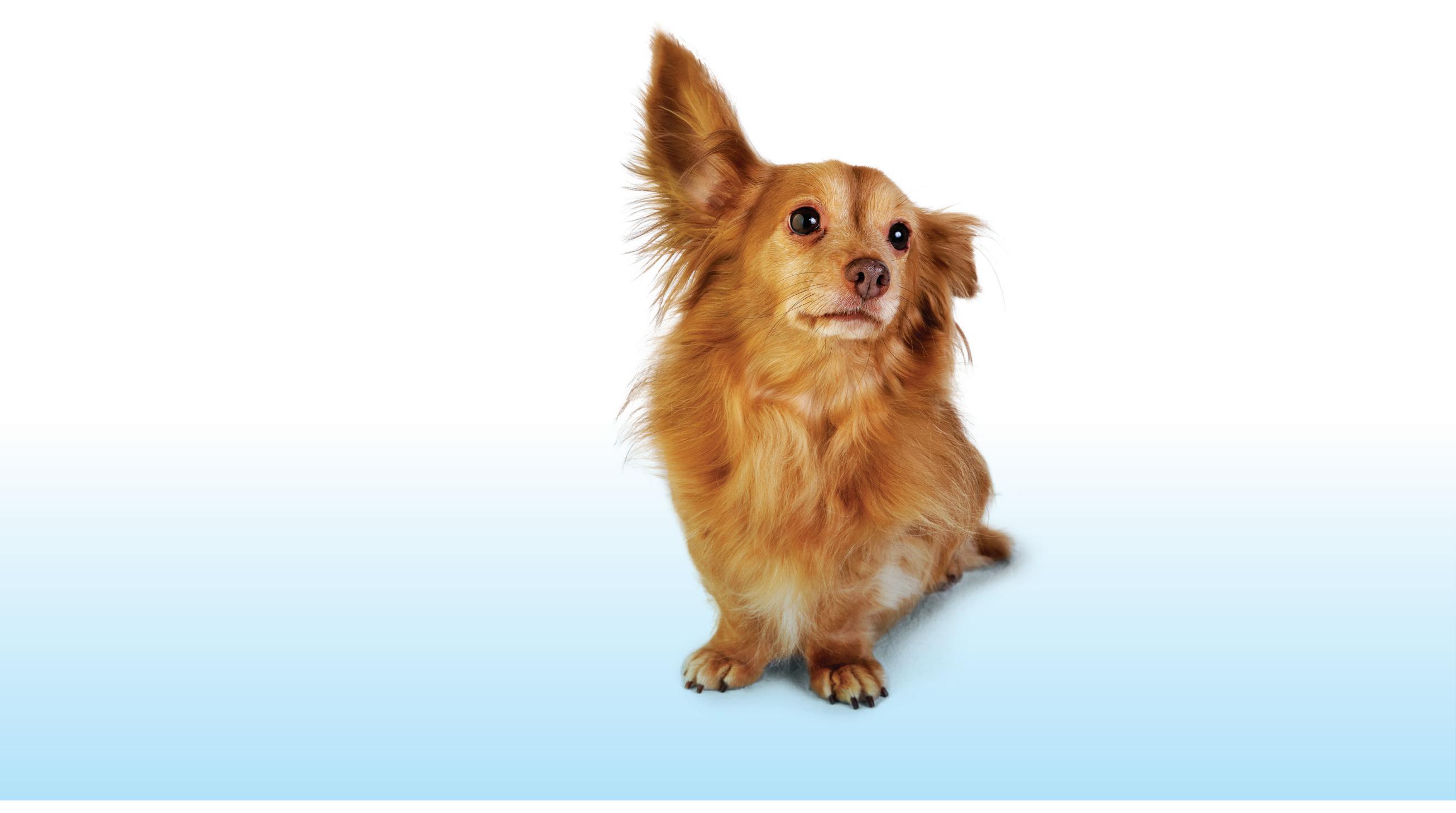Partnership aids racehorse retirement
Racehorses are on track for a better retirement thanks to subsidised vet care made possible through a new partnership between the University of Adelaide and Racing SA.
Owners of retired racehorses will be able to save 20 per cent on selectedvet treatments at Roseworthy Veterinary Hospital within the first 12 months of adopting a horse.
“Retired racehorses have quite specific care requirements and after years of following a high energy
diet and lifestyle, it can take some time for them to adjust to the slower pace of life off the track,” University of Adelaide’s David MacPhail, Director of the Roseworthy Veterinary Hospital, said.
“Through this vet care program, we can help guide new owners about their healthcare needs, including dietary and dental care.
“We hope this program will encourage the adoption of racehorses, who are often still young when they
Coral stress increases as water warms
retire and have many years of life ahead,” he said.
The program also gives veterinary students the opportunity to assist with the general inspections of horses to see if there any ongoing medical issues, including conditions such as lameness and stomach ulcers.
“This partnership gives the next generation of veterinary students real life experience working with horses in a healthcare setting and provides newly retired To page 30
Collaboration agreed for title protection
Nationally consistent title protection and regulation for vet nurses and technicians is one step closer, with the Australasian Veterinary Boards Council (AVBC) and the Veterinary Nurses Council of Australia (VNCA) resolving to collaborate and progress the issue.
The agreement was reached at a recent workshop attended by stakeholders from across Australian and New Zealand, inclusive of registrars from each of the eight Australian veterinary board jurisdictions.
A new Australian study has found that nearly 80 per cent of coral in reefs will be diseased within the next 80 years, a prediction which would have devastating impacts on aquatic wildlife and communities reliant on fishing and tourist industries.
Coral disease is caused by infectious pathogens like bacteria and fungi; however, the meta-analysis by resear-
chers from UNSW Sydney indicates warmer ocean temperatures may be a contributing factor to stress in coral, which makes the animal more vulnerable to infection.
The research shows deadly coral disease has increased as global temperatures have warmed, tripling over the past 25 years to 9.92 per cent globally. To page 30
In a statement, the Australian Veterinary Association (AVA) said a shift towards consistent national regulation and title protection for nurses and technicians will benefit veterinarians by providing a skills boost to ease the workforce shortage, with animal welfare standards also improving in the process.
To page 30
ScienceBreakthrough:
DNA within cells is wound tightly around proteins in assemblies called nucleosomes, which form structures resembling beads on a string along each chromosome. Subsequent to cellular damage, nucleosomes are released into the bloodstream. High levels of cellular turnover and damage associated with cancers lead to higher levels of nucleosomes circulating in blood, which are measurable and correlated to certain cancers.
Canine Cancer Screen & Monitor*
Point of care exclusively from
Heska®Nu.Q®CanineCancerScreenandMonitor: Exclusively from Heska, the world’s rst and only scienti cally proven point of care blood screen to con dently detect and monitor canine cancers in minutes.
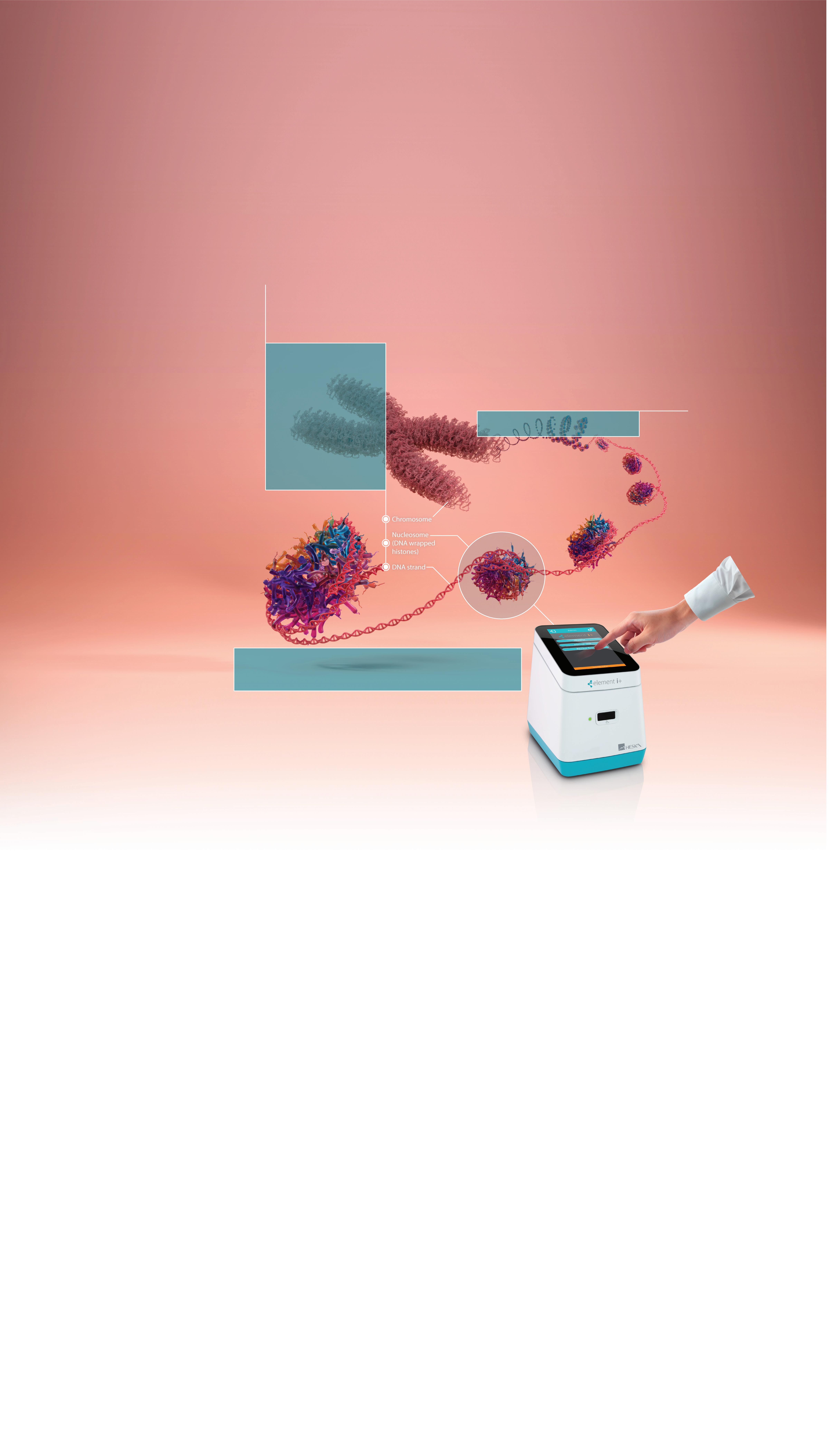
EarlyDetectionisKey
Cancer is the leading cause of death in dogs. Studies in the United States show approximately 6 million dogs are diagnosed with cancer each year there, with around 50% of dogs over 10 likely to develop cancer. Don’t wait for late stage diagnoses. We can now do better. Heska Nu.Q® Canine Cancer Screen and Monitor is often indicated for use on healthy canine patients 7 years or older, while some breeds may bene t from earlier screening. Heska Nu.Q® aids in early cancer detection, monitoring, more comprehensive treatment, and better outcomes.
ClinicalCondenceinHeskaNu.Q®CanineCancerScreenandMonitor
Published studies show that circulating nucleosomes are important, highly accurate epigenetic biomarkers for canine cancer detection.
• 77% of Canine Lymphosarcoma Found – detection of all 5 stages
• 82% of Canine Hemangiosarcoma Found – detection of all 3 stages
• Multi-cancer study results: 7 common canine cancers detected, including Lymphoma, Hemangiosarcoma, Histiocytic Sarcoma, Melanoma, and others
Sophie’s Legacy takes aim at vet staff abuse
The Putland family are working to combat client abuse and suicide in the veterinary industry, following the tragic loss of their daughter Sophie in 2021.
Sophie’s Legacy is their not-for-profit organisation, and it has recently launched the ‘We’re Only Human’ education campaign to prevent animal owners from lashing out at vet staff.
The campaign includes a rollout of posters to veterinary clinics across the country.
The posters include a QR code which pet and animal owners can scan and to take a pledge to be kind, respectful and understanding of the stresses impacting vet staff.
Atthe time of writing, more than 2500 pledges have been made.
Sophie’s father Garry Putland is heading up the campaign and told The Veterinarian the response has been “incredible, overwhelming and heart-warming”.
Lack of knowledge leads to weighty pet issues
Arecent study suggests a lack of understanding about the required diet for pets and an increase in the popularity of treats has led to a disconnect between Australian and New Zealand pet owners about what constitutes a healthy weight for their cats and dogs.
Royal Canin conducted a survey of over 8,000 Australian and New Zealand pet owners, which showed 87 per cent do not consider their pet to be overweight, despite estimates that 50 per cent of pets globally are overweight or obese.
While 96 per cent of the respondents considered obesity in pets to be a serious health condition, the survey also found that 35 per cent of respondents do not know how to check if their pet is overweight, and that veterinary professionals can find addressing the topic difficult with pet owners.
Arecent weight webinar series for animal health practitioners, led by scientific services veterinarian with Royal Canin, Corey Regnerus, who outlined the risks associated with a lack of education about diet.
“Quite simply, our pets do not have the same dietary needs as us. Feeding them leftovers on top of their daily meals leads to weight gain and an imbalance in nutritional needs,” Regnerus said.
Treats for animals is a new trend that makes it harder for pet owners to make decisions around what to feed their cats and dogs. Bariatric and clinical nurse specialist Kate Berridge said, 'With quality nutrition, treats are not necessaryand pet owners should be aware of looking for ways to show love to their pets without food.”
■ JULIAGARDINER
“We’ve had an enormous response from both veterinarians who feel this issue has gone under the radar for too long, and from the wider community who are telling us ‘Wow, we didn’t know this kind of thing was happening, and people should not be doing this,’” he said.
“There’s also been television coverage nationally and internationally, and we’ve had interest in rolling out the same campaign in Canada, because this is a worldwide issue.”
Putland said one message Sophie’s Legacy wants to convey is one of responsibility for the associated costs of pet ownership.
“Illness could come at any time and it could be quite serious, and veterinarians are providing a service at a true cost; there’s a myth about vets ripping people off and we want to say that’s wrong,” he said.
“Owners have the option of paying it at the time, putting money away over time, or taking up pet insurance.” Topage 30
NZ live exports cease
The New Zealand government has reiterated its commitment toanimal welfare with the departure of the final live export sea voyage from the country.
Areview into the country’s live export sector led to a decision to phase out live export by boat over a two-year period ending on April 30.
New Zealand Agriculture Minister Damien O’Connor said the move was motivated by consumer concern about the ethics of live exports.
“Our farmers are world leaders, and we must support them to stay ahead of the curve,” he said in a statement.
“Our position on the map means that the journey to northern hemisphere markets will always be a long one and this brings unavoidable animal welfare challenges.”
O’Connor said that since 2015, live exports by sea have represented 0.32 per cent of primary sector export proceeds, and that the transition period afforded impacted farmers an opportunity to adjust their business models.
He added that the New Zealand government is “in step with our likeminded partners” in regard to animal welfare.
“Australia has moved to phase-out live export of sheep, and animal welfare standards are bedded into our FTAs with the UK and the EU,” he said.
“As global consumer trends change, we must change alongside them or risk being left behind.”
■ SAMWORRADFunding partnership to save red handfish from extinction
Widely acknowledged as one of the world’s rarest fish species, the critically endangered red handfish is near extinction with an estimated 100 remaining in the wild in the two known populations on the reefs of south-eastern Tasmania’s Derwent Estuary. It is one of 110 species prioritised for recovery under the federal government’s Threatened Species Action Plan.
Afunding partnership with the Foundation for Australia’s Most Endangered Species recently committed just over $1million over four years to the University of Tasmania’s Institute for Marine and Antarctic Studies to aid recovery of the species.
Although it presented a formidable challenge, time was of the essence according to IMAS researcher Jemina Stuart-Smith who heads the Handfish Conservation Project.
“The threat to its survival is imminent and with so few surviving fish, we’re extremely grateful to FAME for the funding commitment at this criticalpoint in what is an ongoing and demanding conservation project,” Stuart-Smith said.
Tracy McNamara, FAME’s CEO, said the Foundation was delighted to partner in a project that stood a strong chance of preventing a species becoming extinct.
“Whenever possible, we select projects where we join with like-minded, capable partners.

The red handfish conservation effort reflects all aspects of FAME’s conservation objectives: captive breeding, ecosystem restoration, pest species management and all the associated environmental work that these entail,” she said.
In commending FAME for recognising conservation should not focus exclusively or even principally on endangered keystone predators or charismatic mega-fauna,
Fungal first for dung beetle research
Research by the CSIRO suggests a locally found pathogenic fungus, Beauveria australis, might have contributed to the failure of some imported dung beetle species to establish in Australia.
The CSIRO, Australia’s national science agency, has been studying and using imported dung beetles since the 1960s and for the first time observed the fungus infecting imported dung beetles with their spores.
CSIRO mycologist Cecile Gueidan said fungi spores are picked up from the soil or other infected insects.
“The spores attach to an insect’sbody and germinate, and the fungal filaments then pierce the insect’s exoskeleton. Once they reach the body cavity, they change form and spread out, producing toxins and enzymes to digest the insect from the inside," she said.
CSIRO entomologist Valerie Caron, said this is the first time this fungus has been found in the scarab beetle family, although it was already known to have infected grasshoppers, ants, wasps, and other beetles in Australia.
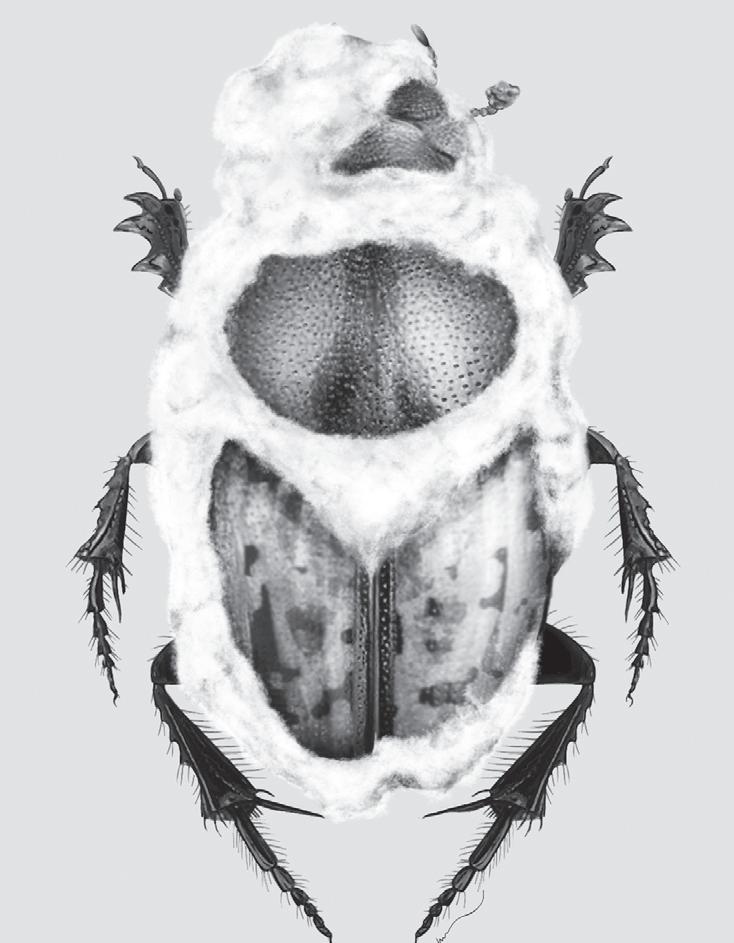
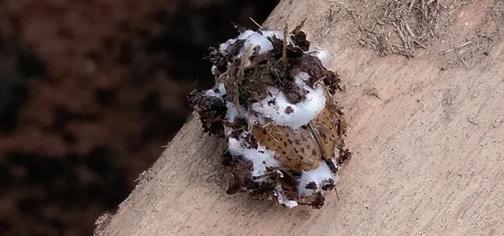
The outbreak occurred in beetles were being prepared for release in the field, which were in a rearing laboratory, separate to the quarantine facility where newly arrived beetles are kept.
“Welooked at the three species of dung beetles recently introduced to Australia from Morocco,” Caron said.
“The fungus was not found in the original
populations in the quarantine facility, and it doesn’t occur in Morocco, so it’s a new pathogen for these dung beetles.
“Given this, the fungus infection most likely came from local soil and dung used in the rearing facility and posed no threat to humans,” she said.
The outbreak was successfully managed, preventing further spread to other laboratory populations.
Australia has a long history of research into dung beetles, after the CSIRO research program was first established to reduce the ecological damage caused by the arrival of cows and sheep.
The program has released 44 species of dung beetles from Europe and Africa since the 1960s, with 23 species established in the field.
The introduced species of dung beetles clean up livestock dung that would otherwise accumulateon the soil surface and which can’t be processed by native species, helping recycle nutrients and reduce fly breeding.
“Fungi may be a potential challenge for the establishment of newly introduced dung beetle species,” Caron said.
“Further research is needed to find out how widespread these native Beauveria species are, their virulence and how they affect dung beetles in the field,” she said.
■ JULIA GARDINERStuart-Smith said the red handfish waspart of Australia’s unique fauna and represented an ancient lineage scientists still do not fully understand. With global biodiversity loss and unprecedented rates of species declines, she said the brake had to be applied to the continuing loss of endangered species.
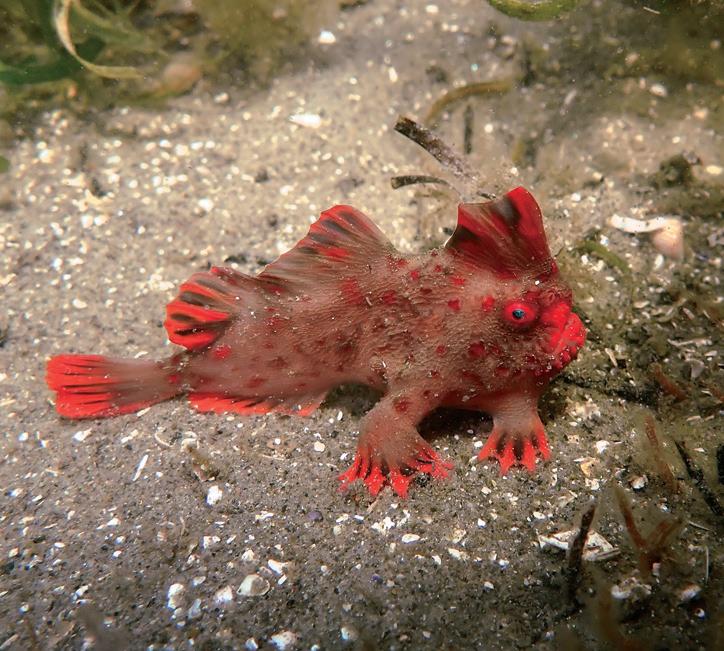
Part of the project will involve establishing what is essentially a ‘school’ where captive-raised red handfish will be ‘taught’ to fend for themselves, before being released into the wild.
Project co-leader and biologist Andrew Trotter, also from IMAS, said although the critically low population level involved challenges, the funding would allow a dedicated team to be put in place, and help good progress in habitat management and awareness to be made during the first year.
“It will result in more available habitat, mitigation of threats and an increase in the captive population.We’re still working out the handfish’s thermal and environmental requirements, but one of the questions that FAME’s funding will help answer is whether the species can be translocated to new areas to establish what we call ‘insurance’ populations,” he said.
■ ANNE LAYTON-BENNETTThe first liquid solution for hypertension
Semintra® 10 mg/mL Oral Solution for Cats is the first angiotensin receptor blocker licensed for feline hypertension. Its unique, targeted mode of action provides reliable, long-term control of blood pressure.1 And, as Semintra® is an easy to give liquid formulation, it is well accepted by cats, making administration easy.2
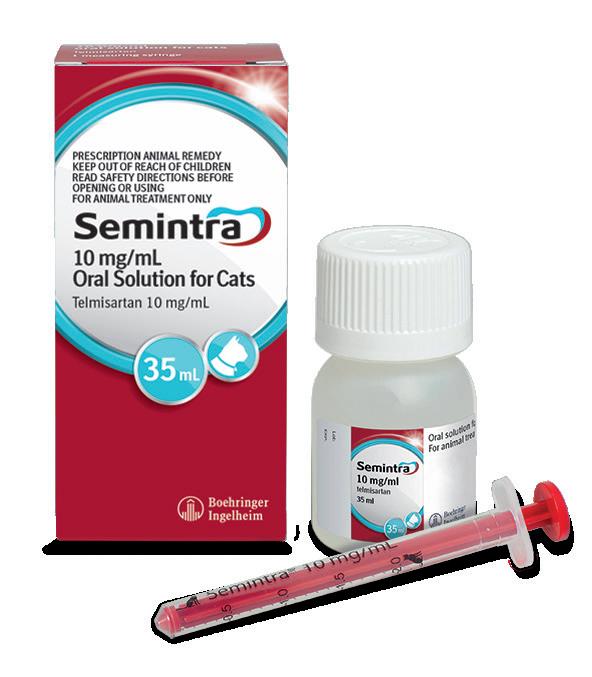
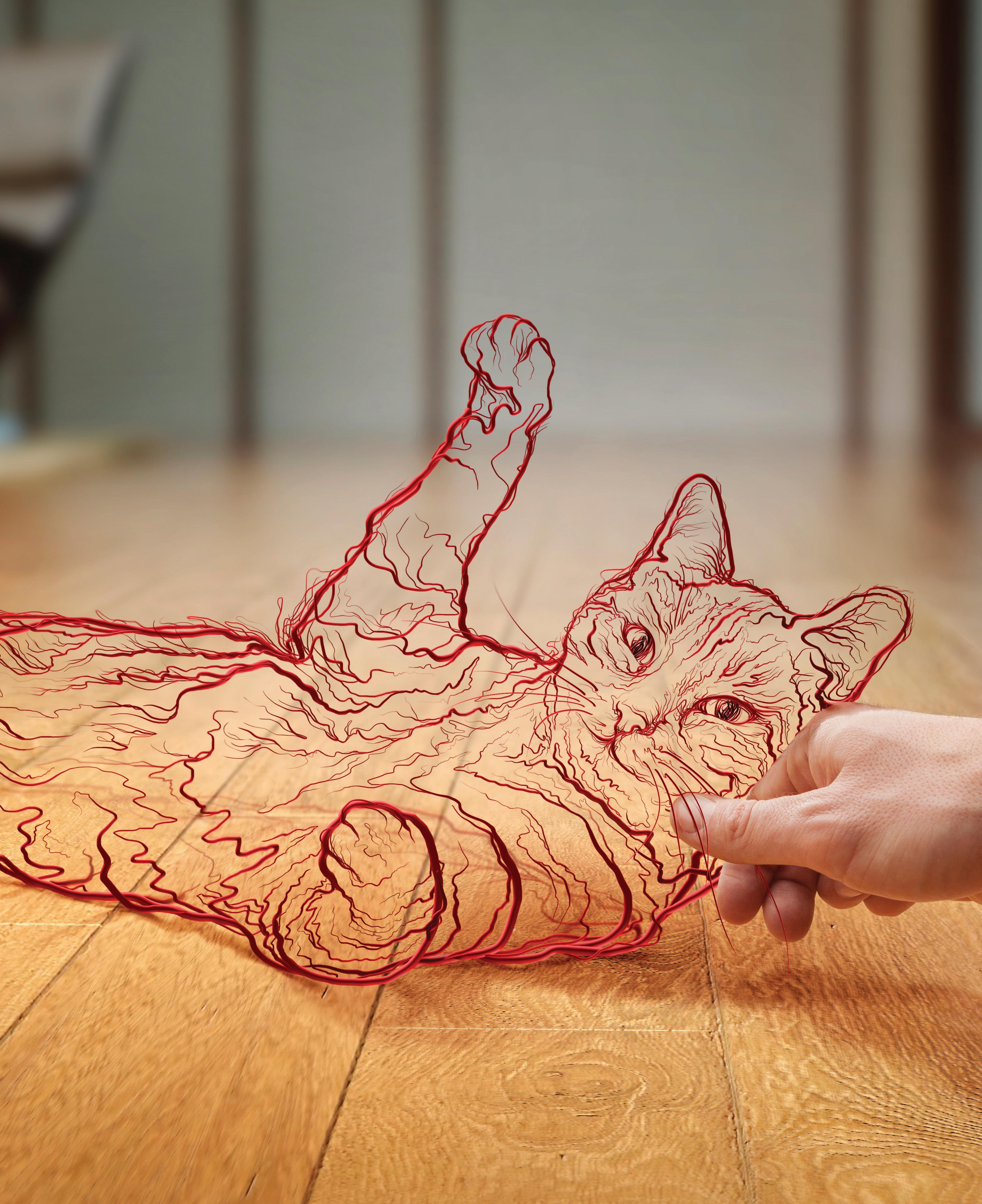
Conservation action needed to save Maugean skate
Further to claims made late last year the Maugean skate faced extinction within a decade if Tasmania’s aquaculture industry in Macquarie Harbour failed to respond to calls for a reduction of pens, and enforced stricter pollution controls, scientists are now calling for urgent conservation action after the release of areport that shows the skate population had rapidly declined by almost half in Macquarie Harbour – the last remaining habitat for this endangered species and one that is significantly impacted by human activity.
When he spoke at an ocean summit in Hobart last November, hosted by The Australia Institute, Neville Barrett, an associate professor at the University of Tasmania’s Institute for Marine and Antarctic Studies, said on the current trajectory hepersonally believed the Maugean skate was the ‘thylacine of the sea’, and could be extinct within 10 years.
Within a few years, almost 20,000 tonnes of salmon and ocean trout were in the 10 fish farm leases in the harbour, and fears low oxygen levels could affect the population of crabs and shrimp that the skate primarily feeds on were flagged by scientists.
“As we predicted from the outset, oxygen declined straightaway. At times there has been little oxygen below 10 metres in the harbour, almost zero levels and sometimes little below five metres at its worst,” Barratt said.
The recent findings of a monitoring project established in 2012 to track changes in Maugean skate numbers, appear to support claims the skate is at serious risk of extinction if urgent action is not taken. Led by IMAS researcher David Moreno the results found a population decline of almost 47 per cent between 2014 and 2021, with ver y few juveniles coming through to keep the population viable. This could be due to eggs on the harbour floor being exposed to unfavourable oxygen levels but as Maugean skate mature at about four years old, and live to about ten, population decline could be quite rapid.
“We recently found that Macquarie Harbour was the last remaining habitat for Maugean skate. Like other endemic species, this limited range means their conservation is inextricably linked with the health of the system they live in.
“The downward trend in relative abundance, together with this unique skate’s restricted range and extremely limited genetic diversity in the population, is clear evidence that the population is at risk,”Moreno said.
The species was discovered in Bathurst Harbour in 1988, and later in Macquarie
“For example, when the stress from a degraded marine habitat was coupled with a storm event in 2019, we found widespread mortalities among the skate we were electronically tracking.We are fortunate that IMAS has been collecting data on Maugean skate in Macquarie Harbour since 2012, as this decline in abundance could easily have gone undetected. We don’t know whether, orhow significantly, the population had already declined before monitoring began, but what we doknow is how quickly this most recent decline has happened,”he said.
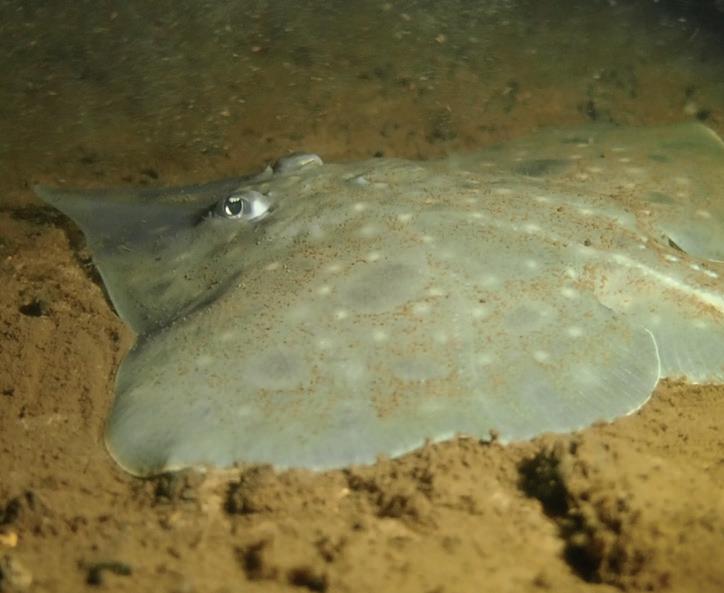
According to Moreno the evidence provided in the new report showed the importance of extending the program beyond 2023.
“The reality is we risk losing an important species which only exists in this harbour. So human activities related to the skate need to be managed, such as recreational fishing, and those that affect the marine environment such as salmonid aquaculture and river flow management for hydro production.
“While funding for the monitoring project does not currently extend beyond 2023, this study shows the value in being able to track the Maugean skate’s population changes through time and in response to management action. Captive breeding to develop an ‘insurance’ population should also be considered,”he said.
Harbour, but IMAS research has suggested the Bathurst population may already be extinct or comprises very few individuals. In 2016 it was estimated about 3200 skate lived in Macquarie Harbour, but more recent reviews have suggested this could be an optimistic figure given the sudden deaths in 2019 of 11 of 25 tagged skate in conditions not considered unusual.
IMAS researcher Jayson Semmens agreed the environmental changes in the harbour had increased the skate’svulnerability to sudden high-impact events, such as water column turn-over driven by westerly winds, which can happen at any moment and potentially decimate the population.
LETTERTOTHEEDITOR

Dear editor,
Igraduated from the University of Sydney with a DVM in 2019. I am writing to share my experience as a rotating intern at a large private referral hospital in Australia from 2020 to 2021. Toprovide context, I have recently completed an emergency medicine internship at The University of California, Davis and am currently an internal medicine resident at Washington State University.
Based on my experiences, and that of several contemporaries at this and other referral centres, the clinical training provided by my Australian internship was vastly inferior to that offered by equivalent programs in the United States. My duties were somewhere between a veterinarystudent, veterinary nurse, and veterinarian. Tasks expected included: restraining animals, dispensing restricted drugs, assisting in surgical procedures, closing incisions, operating the MRI machine, running samples in the practice laboratory,and importing temperature/pulse and respiratory rate data into the medical record. There was no opportunity for supervised case responsibility or training in interventional or diagnostic procedures.
As a keen new graduate, this was highly disappointing. I was lucky enough to be mentored by several individuals within the practice who tried to increase my clinical responsibilities; however, management ultimately proved resistant to change on the grounds that interns actually seeing cases would be detrimental to patient care and the reputation of the hospital. This is in contradistinction to every human teaching hospital where interns will have some contact with clients and patients under appropriate supervision.
Ibelieve the Australian Veterinary Association should consider drafting veterinary internship guidelines in a similar vein to the AVMA and AAVMC. These guidelines state that the “primarypurpose of an internship is to provide an educational program for the intern rather than a service benefit to the hospital”. The AAVMC guidelines go on to define the following minimal standards that an internship must provide: 1) Include a well- defined curriculum consisting of experiential (clinical) training and didactic education; 2) Provide the intern with a broad range of relevant and current clinical experiences while under appropriate
The skate’s precarious future prompted the state government to commit to developing a conservation action plan to include research priorities and mitigation actions. Restrictions on gillnetting were introduced in 2015 and tightenedlate last year to reduce accidental by-catch of skate. But the restoration of oxygen levels remains the biggest challenge to the species.
■ ANNE LAYTON-BENNETT
The Maugean skate monitoring project was supported with funding from the Tasmanian Government through the IMAS Sustainable Marine Research Collaboration Agreement.
supervision;
3) Ensurethe internhas the appropriate level of responsibility for patient careand client service; 4) Provide an appropriate training environment with adequate clinical and educational resources; 5 ) Provide adequate working conditions to supportthe mental, physical, and social health of the intern; and
6) Conduct regular outcomes assessment using appropriate metrics of success. As in the US, guidelines would not be enforced by a regulatory body and remain advisory to both universities and private practices. The creation of a centralised platform for former interns to leave anonymous feedback visible to new applicants would ensureadequate outcome reporting and encourage guideline compliance.
Internships should be offered only by practices that have an interest and commitment to clinical training. I have worked at other private referral practices in Brisbane and Sydney wherethis was the case. The minority of practices that use interns as cheap nurses need to be exposed. I feel it is difficult for interns to complain, given they are often new graduates with a fear of reputation damage that may hurttheir candidacy for speciality internship and/or residency.
Yours sincerely,
Matthew Wun DVM Via emailINSEPARABLE
PEXION® is the only targeted therapy developed specifically for dogs with idiopathic epilepsy, balancing seizure control whilst preserving quality of life in patients.1,2
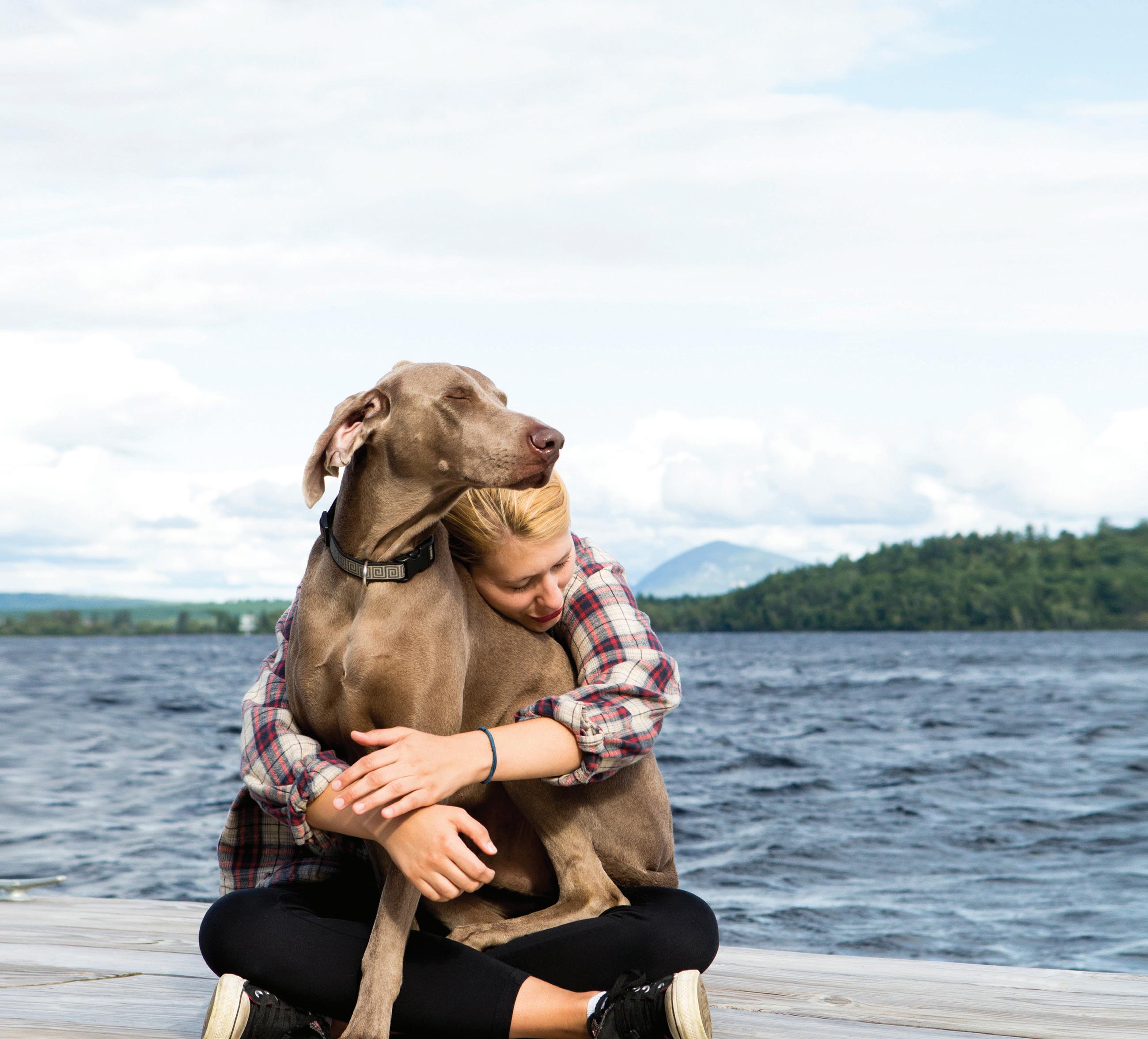
RECOMMENDED BY SPECIALISTS
Scan to rediscover the role of PEXION in managing canine idiopathic epilepsy*

“PEXION has provided a vital new tool for the treatment of epilepsy in dogs. As a neurologist, I now use it as my first choice anticonvulsant in drug-naive patients, because of its improved side effect profile over more traditional drugs, its improved hepatic safety, and its short half-life (which means I know whether it’s working fairly quickly). It is also one of the few anticonvulsants that has a sound body of evidence to support its use and it gives us one more option to use in our never-ending quest for that most elusive of things: perfect seizure control.”
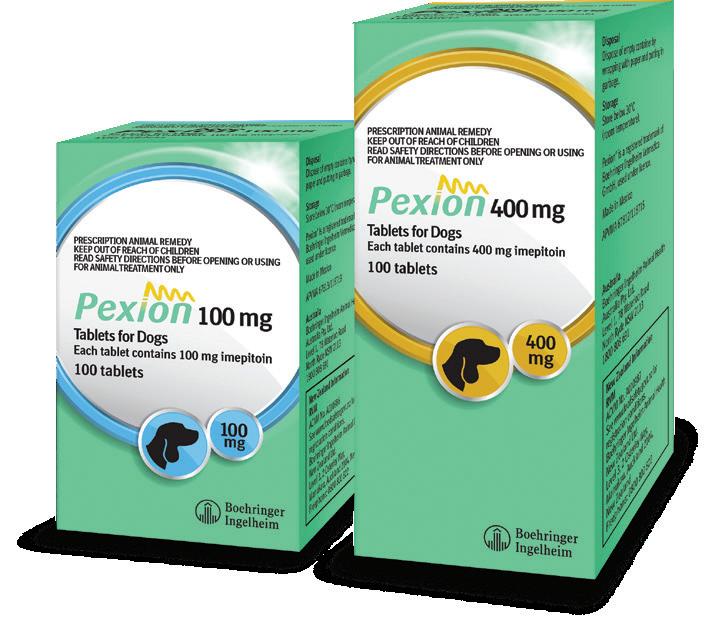
BREE TALBOT: WILDLIFE HOSPITAL VETERINARIAN
elcome to A Day in the Life, a new feature in The Veterinarian. Each month we will discover what a typical day looks like in the life of a not-so-typical vet, and shine a light on unexplored and perhaps unexpected corners of the veterinary profession. Our inaugural column features Bree Talbot, Head of Veterinary Services at Byron Bay Wildlife Hospital and Byron Bay Wildlife Sanctuary in Knockrow, on the NSW North Coast.
Originally hailing from Sydney, Talbot graduated from the University of Sydney and first encountered wildlife patients when she began working inmixed practice in the Hunter Valley, piquing her interest in native animal care. After moving onto small animal practice, Talbot gained further exposure to wildlife practice and also began working with exotics, which culminated in a six-year stint as a clinical registrar at the University of Sydney’s Avian, Reptile and Exotic Pet Hospital. By 2014, Talbot’s interest in wildlife and exotic medicine led to her successfully sitting her Membership examinations for the Australian and New Zealand College of Veterinary Scientists in Unusual Pet Medicine and Surgery.
While teaching and working at the Avian, Reptile and Exotic Hospital, Talbot’s passion for wildlife grew as she began tending two colonies of koalas: one colony was infected with chlamydia, the other was chlamydia-free. “I got really interested in wildlife medicine generally and koala medicine particularly, and became one ofthe main people to look after the koala colonies,” Talbot said. “I got a lot of wildlife
of each day, therefore, Talbot and the other staff have a morning meeting not only to assign roles, but to ensure they are not getting in each other’s way while they’re working. “We have a bit of a huddle, and figure out what’s going on with all the animals, what procedures we need to do on those animals, what roles and responsibilities everyone is going to be taking that day,” she said. “Then that basically all goes out the window once the animals start coming in!”
In addition to the logistical constraints posed by the small space in which they operate, one of the main challenges Talbot faces when scheduling any work day is that many of the cases who present to the hospital are unscheduled arrivals. “Akoala or a snake never knows when it’s going tobe hit by a car,” she points out. “So, we try to have our plan, but we also know there has to be flexibility, and we have to factor in the unknown.
For me, the unexpected is expected now. The strangest thing is when someone turns up asking to have their dog or cat vaccinated, and we have to explain we don’t treat domestic animals.”
Talbot tries to ensure hospital cases are treated in the morning, and that they perform any Xrays, procedures or surgeries they need to before having another team meeting around noon to see where everyone is up to. “Things can change very quickly and animals come in all the time,” she said. “It’sall about trying to triage the animals as quickly as possible to figure out how urgent their needs are and what we need to do, and then to determine which vet or nurse has the capacity to do those procedures or surgeries.”
“We sometimes lose track of what has happened to an animal, and it can be a bit disillusioning if you don’t know what’s going on with them or whether we’ve done the right thing –so when we get release stories and videos from the carers, it’s great because it reinforces our belief that we’re making a difference.”
Talbot described witnessing the release of an endangered green sea turtle named Rainbow, whose rear flipper she had amputated after a shark attack, as being one of the most incredible experiences of her veterinary career. “I was lucky enough to go out to Julian Rocks, a marine conservation park up here, and participate in Rainbow’s release,” she said. “Once she had been released and had her bearings, we were able to dive in and swim around with her – it was absolutely soul restoring. Doing these kind of things make it all worthwhile, when you know you’ve helped the animal and they’ve got back out to where they should be.”
experience with koalas, wombats and lots of different birdspecies while at the hospital, and Ireally enjoyed the exotic medicine side of things as well as teaching students, too.”
While on maternity leave after having her second child, Talbot saw an advertisement for her dream job: a wildlife veterinarian position for a brand new hospital in Northern NSW. In the midst of the Coronavirus pandemic, she jokingly asked her husband whether he wanted to move to Byron Bay – and was surprised when he said yes. Talbot met with Steven van Mil, the co-founder of the Byron Bay Wildlife Hospital, and discovered they got along well and shared a vision for best practice wildlife care. In October 2020, in between COVID waves and lockdowns, Talbot headed north to Byron Bay. “I moved the whole family up here and became the Foundation Vet, the first vet to get this hospital started,” she said. “It’s been a crazy ride ever since!”
Not surprisingly, when asked what a typical day at Byron Bay Wildlife Hospital entails, Talbot said “there’s no such things as a typical day”. That said, as a mother of three children ranging in age from 16 months to five years, her day invariably starts early, getting the kids ready and dropping them offto day careand primaryschool before coming to work. A vet nurse generally arrives at the hospital half an hour beforeTalbot, and will have begun checks on all the patients. Once more than one person is at the hospital, however, things become…interesting.
“Our hospital is very little – it is literally in the back of a truck,” Talbot explained. “While we have lots of people who work here, we cannot have a massive team on site at the same time. We have vet students who come in on a monthly basis and I always have to tell them that wherever they stand in our hospital they are going to be in the way,and they should not be offended if someone tells them to move.” At the beginning
On top of her veterinary commitments, Talbot’srole has other responsibilities, including administration work, meetings, and media commitments, particularly when the hospital is involved with conservation projects. “I have to tryto get that in amongst my day as well, and fit a coffee and some lunch as well at some point,” she said. “And then it’skind of just surviving the day!”
While the lack of space and unpredictable patient load can be difficult to manage, the other aspect of her role that Talbot finds challenging is having to make frequent judgment calls. “People bring animals in and we have no idea what happened to them – they have often found them on the road, so you have to be a bit ofa detective,” she explained. “Without sounding too black and white, we have to ensurewe’re putting adequate resources into each case, and that we’re not wasting resources that could be better applied to another animal.” As a wildlife veterinarian, Talbot is also bound by the NSW Code of Practice for Injured, Sick and Orphaned Protected Fauna, which has all sorts of rules about what can be done with wildlife patients, including how they are released what injuries they can be released with. “You have to weigh two different things: the welfare of the animal and what the Code of Practice says you can or cannot do,” Talbot said. “We can’t save every animal, because that’s not realistic and may not be in the best interests of the animal in front of you. There are moral and ethical questions to go through everytime.”
Despite these constraints, seeing or hearing about the release of animals she and her team have cared is one of the most rewarding aspects of Talbot’swork. “As a wildlife vet, we do all the intensive work and then the animals go out to rehabilitation, where they might stay for a couple of days or a couple of months,” she said.
Being able to treat threatened species such as green sea turtles and koalas is also particularly gratifying for Talbot. “We do get a few threatened or endangered species coming in, and they are always quite exciting to work with,” she said. “When you know you’re treating an animal that could potentially become extinct if you don’t help them, you feel how important it is to dothe best job you can.”
■ JAI HUMELAnd now,to conclude our Day in the Life with Dr Bree Talbot, we have the CREATURE QUESTIONS we will ask each month’s featured veterinarian.
Do you currently have any pets?
Ido. I have four rabbits, some goldfish, and a rescue dog. She’s an Irish wolfhound crossed with a bull Arab and she’sthe biggest sook in the world.
What is your favourite animal?
Probably the koala, even though that’s really cheesy. I would have said a tiger back when I was young, but now it’s sort of turned into the koala. They’re cute! My other favourite would be flying foxes, because baby flying foxes areadorable.
If you could transforminto any animal, what would you be and why?
Ireckon I would be a whale. I watched The Whale and the Snail the other night with my kids, and they’repretty cool animals. Not much beats them up in the ocean – they just glide through and get to see the world. How cool is that?!
‘I got really interested in wildlife medicine generally and koala medicine particularly, and became one of the main people to look after the koala colonies.’
(very sparse!) sparetime. Howard lives in the Southern Highlands of NSW.
Foodand mood: the impact of diet
Introduction
In this month’s edition of The Veterinarian,the third article in our mental health series explores the impact of diet and nutrition on mood and wellbeing. We will explore the link between gut and brain health, known as the gut-brain axis, explaining how specific dietary choices can either enhance or impair this complex body system’s function. However, the scope of dietary impact extends beyond the gut-brain axis; indeed, your food consumption affects virtually ever y cell in your body. Certain
microbiome, the collection of bacteria, archaea and viruses that inhabit the intestinal tract, that has been linked to the development of mood disorders.1 Eating a diet that is low in fibre but high in saturated fats, refined carbohydrates, and artificial sweeteners may disrupt the balance ofgut bacteria, a condition known as dysbiosis.2 When the gut bacteria is out of balance, it can result in the production of proinflammatorycytokines -substances that promote inflammation. These cytokines can potentially contribute to mental illnesses.
with most of these diets is a high intake of fruits and vegetables, nuts and legumes which has been associated with a reduced risk of depression.
Inflammation
The Mediterranean diet, known for its ability to decrease inflammation, stands in contrast to diets high in refined carbohydrates and saturated or trans-fats, which can trigger immune activation and lead to inflammation. Certain nutrients that are plentiful in the Mediterranean diet, like omega-3 fatty acids, possess anti-inflammatory properties. These nutrients may help in reducing the likelihood of depression induced by cytokines, which are proteins that can promote inflammation.2
Conclusion
We all need to eat several times per day to survive and thrive. Simple changes such as adding more fruits and vegetables, reducing refined carbohydrate intake, and adding in anti-inflammatory foods such as omega-3 rich seafood or plant-based alternatives has the potential to have a marked impact on our mood state and risk of mood disorders such as depression. In the next article in the mental health series, we will explore how supplementation can further support our mental wellbeing.
foods may even trigger chronic inflammation through immune activation. Our discussion will further elaborate on the concept of an “anti-inflammatory” diet and explain how some foods may increase the risk of depression.
The gut-brain axis
The interaction between the gut and the central nervous system is complex and somewhat elusive. Emotional health, mood status, motivation, and the presence of mental illness, such as depression, are all known to be influenced by the relationship between the gut and the brain. It is largely the gut
How does diet affect mental wellbeing?
Mood disorders are a major cause of disability and mortality worldwide, and around 50% of suicides can be linked to a mood disorder such as depression or bipolar disorder.3 Asystematic review published in 2019 investigated the effect of different diets on mood states. It found that diets including the DASH (Diet Approaches to Stop Hypertension) diet, plant-based diet, and the Mediterranean diet can improve mood more than other types of eating patterns.3 What may be a shared factor
References
Mohan A, Godugu S, Joshi SS, Shah KB, Vanka SC, Shakil HPD, Veliginti S, Sure PS, Goranti J. Gut-brain axis: altered microbiome and depressionreview. Annals of medicine and surgery. 2012; 85(5):1784-1789.
Firth J, Gangwisch JE, Borisini A, Wootton RE, Mayer EA. Food and mood: how do diet and nutrition affect mental wellbeing? BMJ. 2020; 369(m2440).
Arab A, Mehrabani S, Moradi S, Amani R. The association between diet and mood: Asystematic review of current literature. Psychiatry Research 2019; 271:428-437.
DO YOU HAVE SOMETHING TO SAY?
Is there a topic you’ve wanted to tell everyone about?
Have you ever thought you would like to write a clinical review but don’t know where to start?
Do you have a hobby or historythat you think vets everywhere would like to learn more about?
Then don’t delay – email The Veterinarian at editor@vetmag.com.au and let us know –because your words could be in the pages of next month’sissue!
Sarah Howard graduatedas a veterinarian from the University of Sydney in2012. She worked for five years in a combination of mixed and small animal practices, before joining the team at PAW by Blackmores as aTechnical Services Veterinarian. She now works as Head Vet for PAW, and works on product development, education, and the technical advisory services. Howard has two young children, a horse called Flora and avery human-like Whippet called Winnie. She is passionate about natural health and studies Naturopathy in her
For those of you that are unfamiliar with poker I will recap how the game works: To begin, a player needs to put money to get dealt their cards. The player then needs tochoose to invest further for every additional round of cards that are drawn. With each round of cards that are dealt, the probability of success will change, and a good poker player will be continually reassessing their odds of winning. When the odds are in their favour, agood poker player will continue tobet – and when they aren’t, they will quit (or “fold”).
Poker is unlike almost any other game in that being successful in poker is not just a measure of how you play the cards that you are dealt … being successful is also a measure of the cards that you choose not to play. This is highlighted in the statistic that a professional poker player will only choose to play a mere 15–25 per cent of the starting cards that they are dealt while an amateur will choose to play over 50 per cent. A professional player is successful because of their proficiency at navigating the sunk-cost fallacy and quitting hands that they have a lower chance of winning.
The sunk-cost fallacy is a strong cognitive bias that exists in most people, in which there will be a strong urge to continue to invest resources (such as time, money, or
effort) into an activity that is unlikely toyield a positive return, simply because they have already invested somuch in it.
In poker, and in business, the sunk-cost fallacy makes a person’s rational analysis of the likely future returns difficult to assess, because they are blinded by their past investment. When this happens, itis impossible to know when it is the right time to move on.
A poor poker player will fall victim to the sunk-cost fallacy if they continue to invest in a hand that they have a low chance of winning. Their emotional attachment to the chips they have already put in makes them want to continue to work (and bet) on a hand with a remote probability of success.
Business owner’s often fall victim tothe sunk-cost fallacy because they have so much invested in their businesses (in time, effort, money, identity) that they hold on to their businesses and careers far beyond when all the evidence around them says that it is in decline, time to sell and or retire.
So… how do you avoid falling victim to the sunk cost fallacy? It is not that complicated:
Being able to read the signs
In business, and in poker,you need to be keeping a close eye on “the
Management
cards you are dealt”, so that you can notice when the odds of success change.
Inbusiness, this means keeping an eye on KPIs like revenue, expenses, profit, competition, new client flow, etc.
Being able to recognise your emotions
In business, and in poker, it's important to make important decisions rationally and unemotionally. If you are deciding to stay, is it because you have read the signs and rationally assessed the positive prospects of the future? Or is there an irrational/ emotional anchor keeping you from moving forward?
Make decisions based upon the p robability of success rather than emotional attachment
Once you’ve read the signs and kept your emotions in check, all you need to do is make rational decisions based on the probability of success.
In business ownership, and in poker, winning is not about each transaction, it’s all about the long game and winning the long game is not just about playing well…it’s about knowing when to stop. Knowing when to hold ‘em and when to fold ‘em, so that you are ahead after the total amount of time and hands played.
Simon Palmer is the Managing Director of Practice Sale Search, Australia’s largest vet practice brokerage. If you’d like more information on practice sales or want to have a confidential discussion about your practice’s circumstances, email Simon Palmer at info@practicesalesearch. com.au or call 1300 282 042.The UK domestic inflation rate fell to8.7 per cent in April, the first time it has dropped below 10 per cent since August last year. This is mainly due to falling world energy costs; however, food prices remain stubbornly high, astonishingly 19.1 per cent higher than they were just a year ago. The cost-of-living pressure is impacting on the ability ofpet owners to feed and care for their animals. Four of the largest British pet charities have all reported evidence of increasing need and hardship in the veterinary sector.
The RSPCA says that over 75 per cent of its centres and personnel are seeing more cases where treatment is either deferred or declined than before the economic crisis. The charity has invested £1.5 million (A$2.84m) in crisis support measures, but it is still seeing 25 per cent more abandonment cases and 13 per cent more neglect cases. In their 2022 UK wide Animal Kindness Index survey 19 per cent of respondents were worried about being able to feed their pet and 28 per cent about caring for their animals. The RSPCA’s chief vet Caroline Allen said that trying to provide a service in these circumstances was stressful for staff and advised owners to be honest about their financial circumstances with their vet and encouraged vets to adopt a more pragmatic approach to cases to obtain the best possible outcomes when funds are constrained.
Cats Protection (CP) also conducted a survey in December 2022 which found that by the end of last year 31 per cent of respondents were worried about the costs of emergency veterinary treatment, 18 per cent said they were cutting
Pigeon post from the UK
back on routine veterinary services and 25 per cent were reducing pet insurance. The deputy manager of one CP rehoming centre in London thought, ‘The cost of living is having a greater impact on animal welfare than COVID.’ In March, the Dogs Trust (DT) launched an online petition calling for a 12-month suspension of the 20 per cent VAT (GST) rate on veterinary medicines, services, and pet food to prompt the government to act in the spring budget. Over 90,000 signatures were collected by 15 March, but no tax waiver was forthcoming from the Chancellor of the Exchequer. The DT recorded over 50,000 rehoming requests in 2022.
The PDSA’s Paw Report for 2023 which was published in April surveyed 5,500 pet owners and 745 veterinary professionals (all staff associated with providing veterinary services). It found that 34 per cent of owners were having to make other cost savings to continue to care for their pet, while 47 per cent were worried about the costs of veterinar y treatment. The survey also asked how the economic squeeze is impacting vet practices: 25 per cent of ‘vet professionals’ feared their practice may have to reduce its size or staffing because of rising costs, over 50 per cent thought owners were delaying care for their pets and 25 per cent reported fewer clients attending their practice.
While many may be looking to the future with apprehension the University of Edinburgh is looking back as this year marks the bicentenar y of the founding of the Edinburgh vet school. William Dick was the principal founder of the new school and to this day it is still
often referred to as ‘The Royal Dick’. William was born in 1793, the son of a blacksmith and farrier who developed a keen interest in anatomy and medicine. He attended the Royal Veterinary College in London (founded 1791), at that time the only vet school in Britain; the world’s first vet school having been established in Lyon, France in 1761. After swiftly gaining his diploma William returned to Edinburgh and began teaching at the age of 25. Within five years (1823) he had opened the first vet school in Scotland and by 1833 had commissioned a new college building in Clyde Street in the New Town area of the city.The course comprised two lectures a week for 23 weeks covering chiefly the anatomy and
diseases of farm stock and dogs. By the time of his death in 1866 the Clyde Street Veterinary College had four tutors and the 818 students Dick had taught were to be found throughout the world. Some of them went on to found new vet schools in: Glasgow, Liverpool, Ireland, Canada, Australia, and the USA. In Australia it was one of Dick’s pupils, Graham Mitchell (c.1831-88), who after arriving in Melbourne in 1855 was responsible for the first moves to establish a veterinary profession in Australia and later assisted William Tyson Kendall (1851-1936) in opening the Melbourne Veterinary College, Australia’s first veterinary teaching institution, in 1888.
Edinburgh university is holding a series of events to mark its 200-year history. These include: lectures, aguided historical walk through veterinary Edinburgh, a vet campus sports day and a gala dinner. Though a couple of centuries have passed since the foundation, Andrew Gardiner,who holds a PhD in British veterinary histor y and currently lectures at the Royal Dick, said that, ‘ When researching historical British veterinaryeducation and practice, I was struck by the similarities in areas of concern then and now: how the profession regulates itself; the future sustainability of veterinarywork; theoryversus practice in veterinar y education; debates on animal welfare; whether to specialize by species; emerging infections; food security … the list goes on.’ Or as French author Jean-Baptiste Alphonse Karr wrote back in 1849 … ‘plus ça change, plus c’est la même chose’ …the more things change, the more they stay the same!
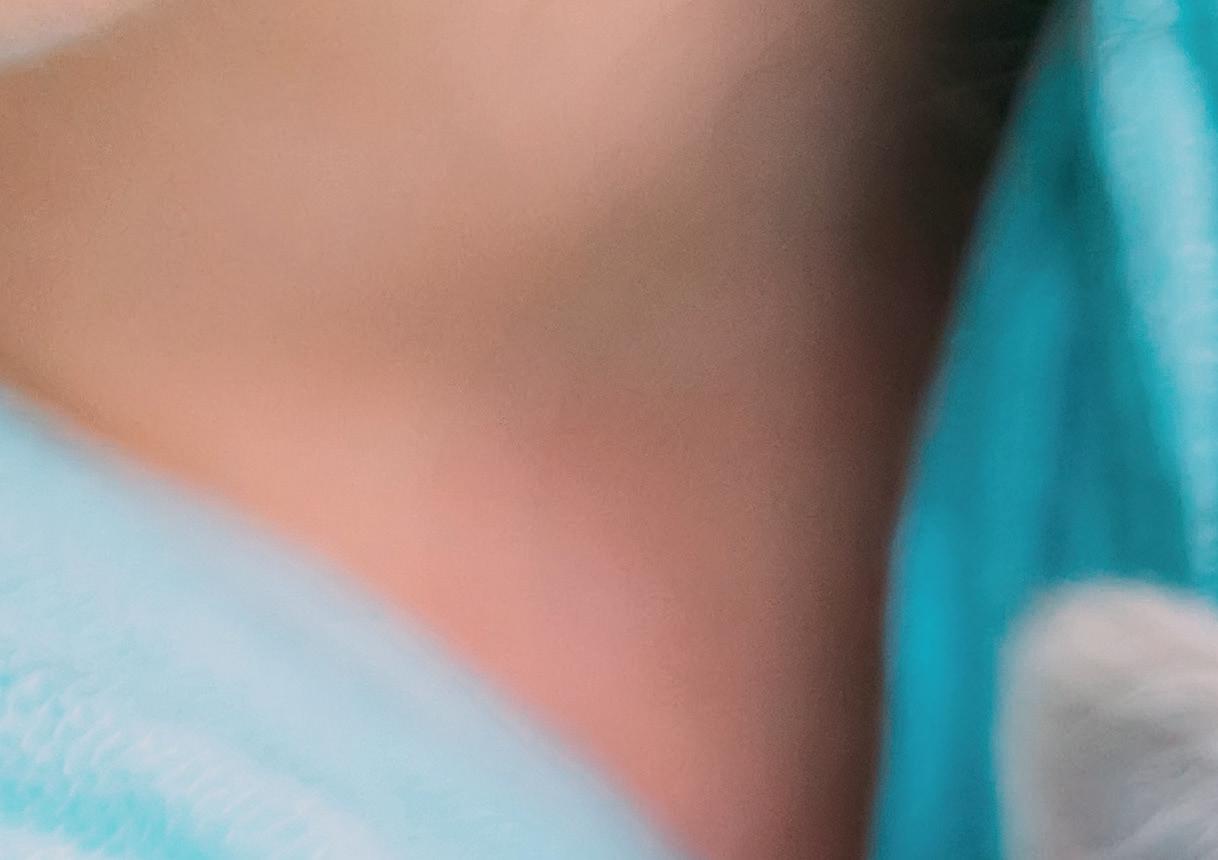
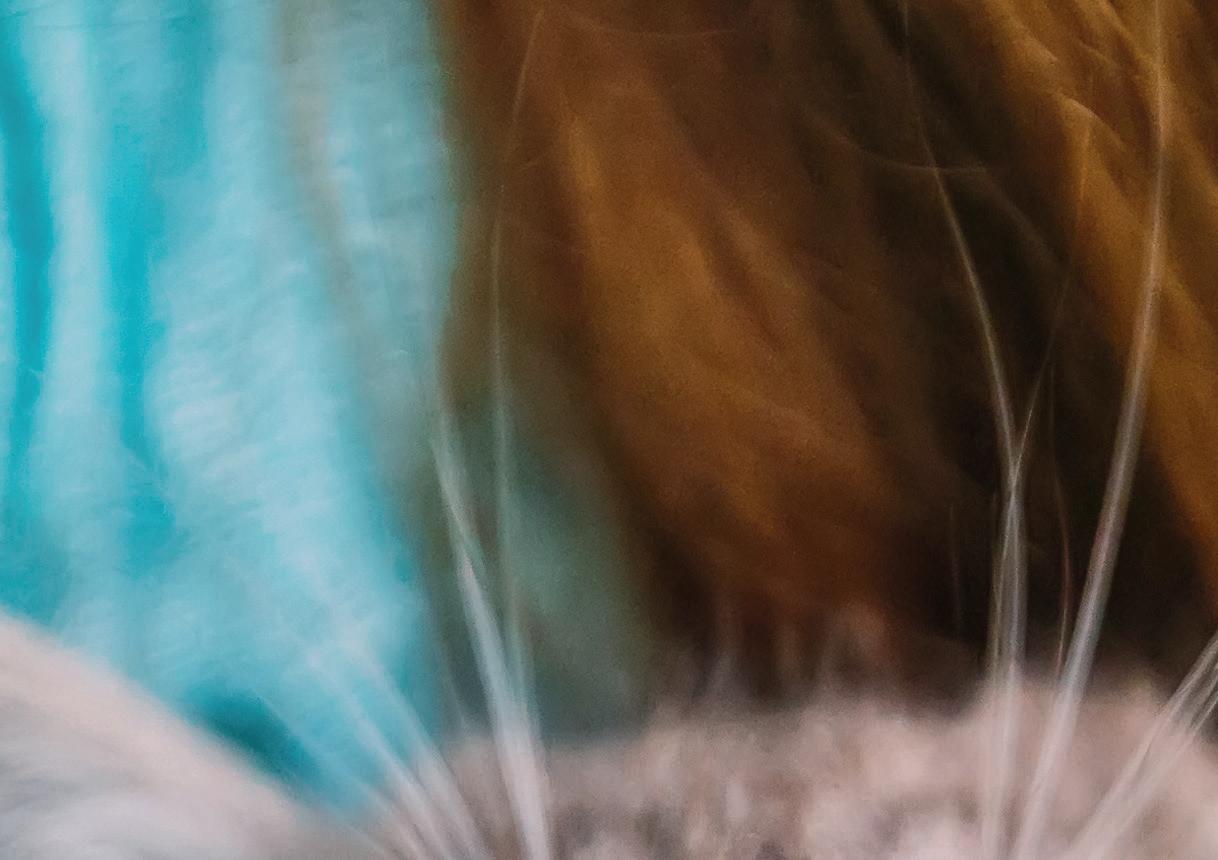
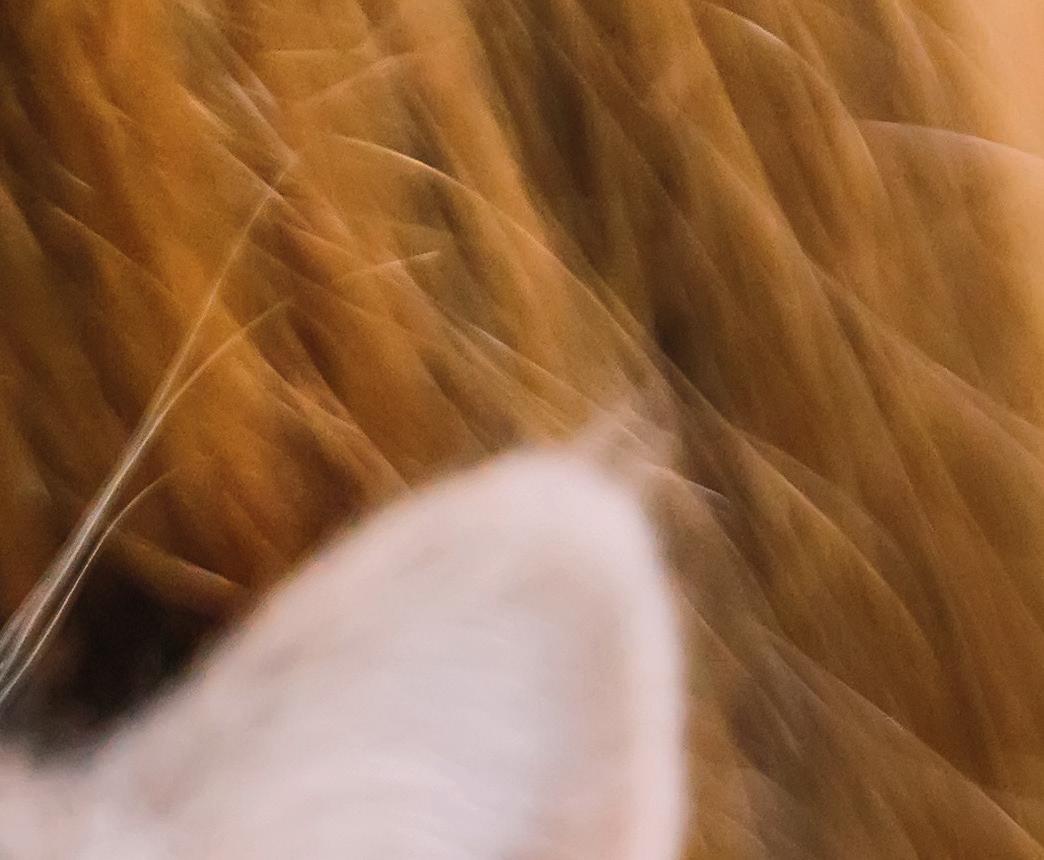
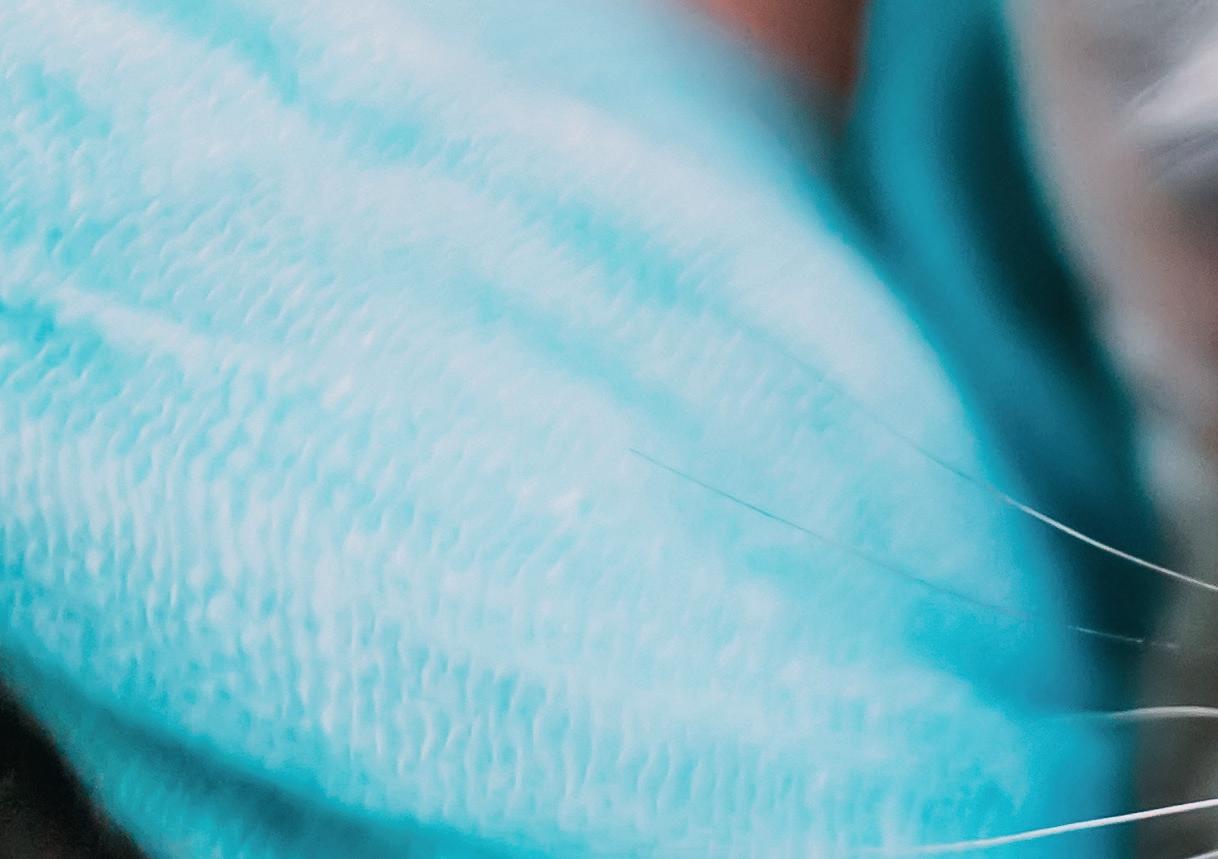
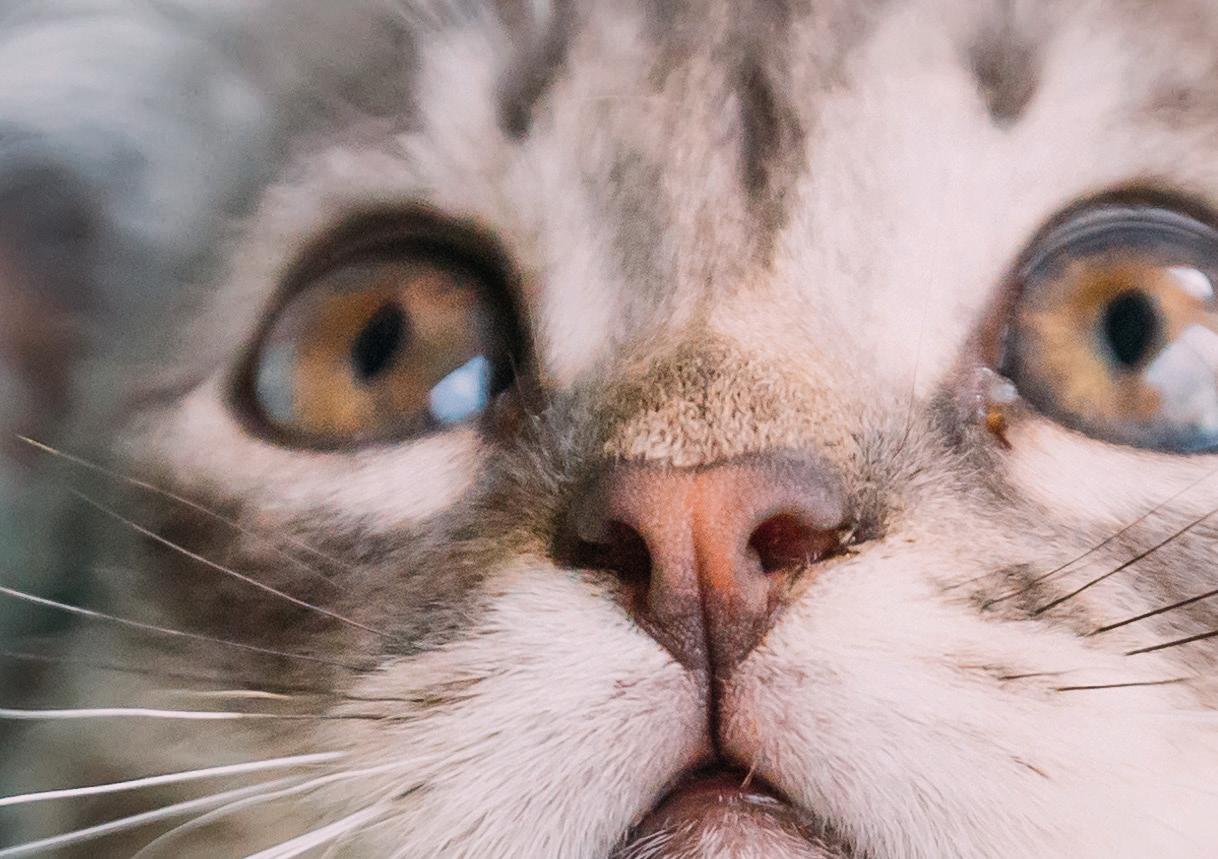
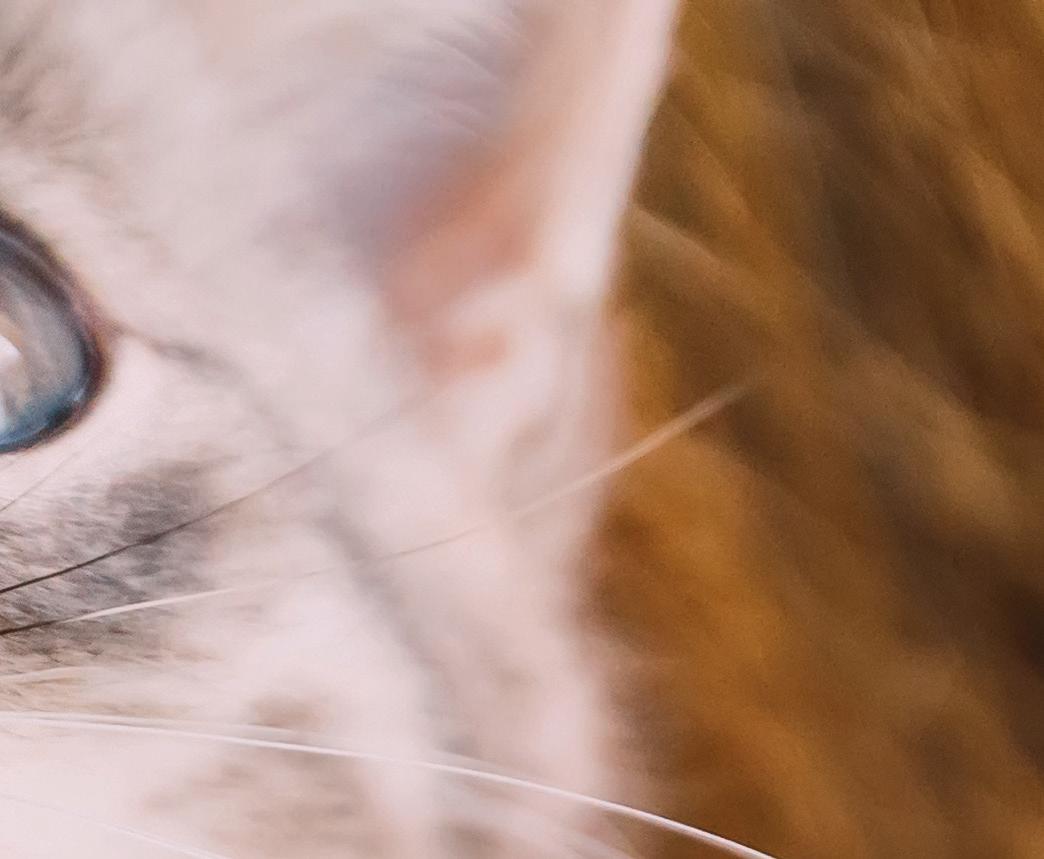
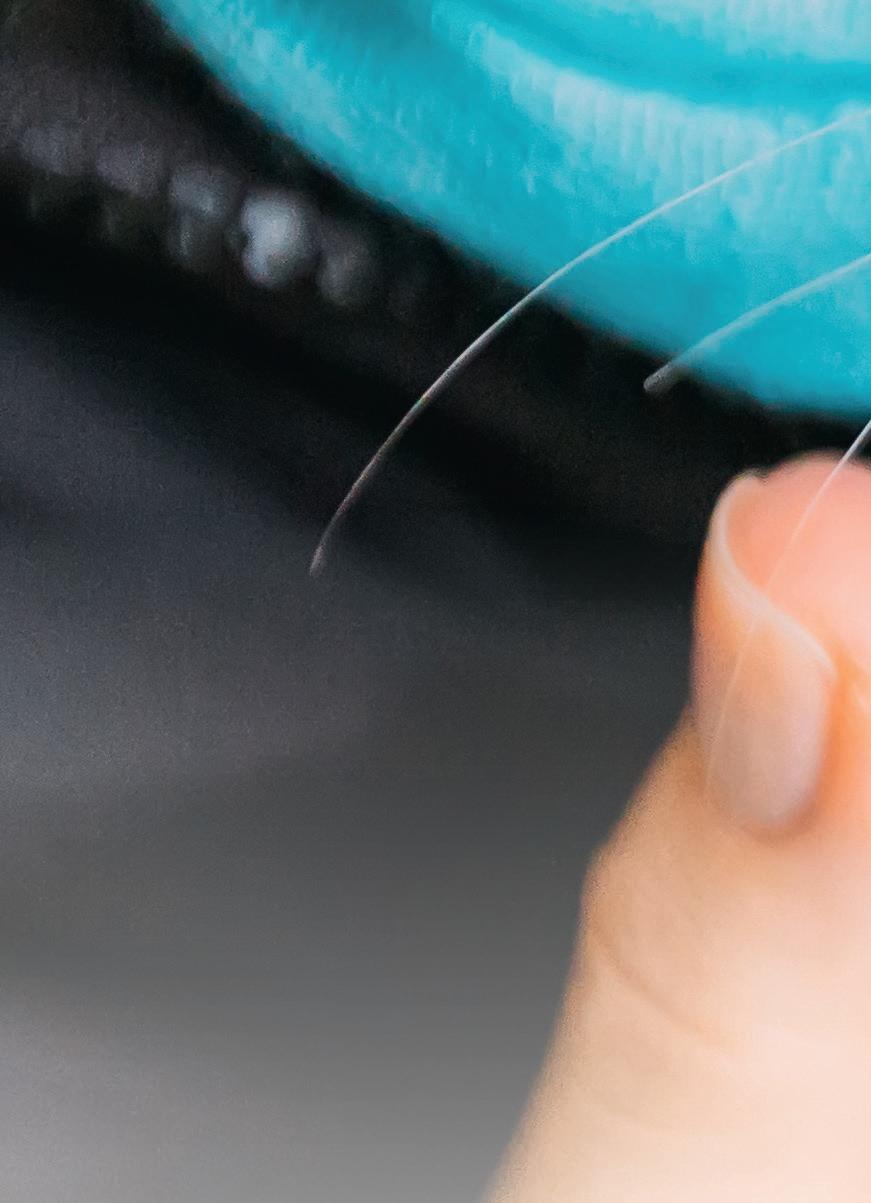


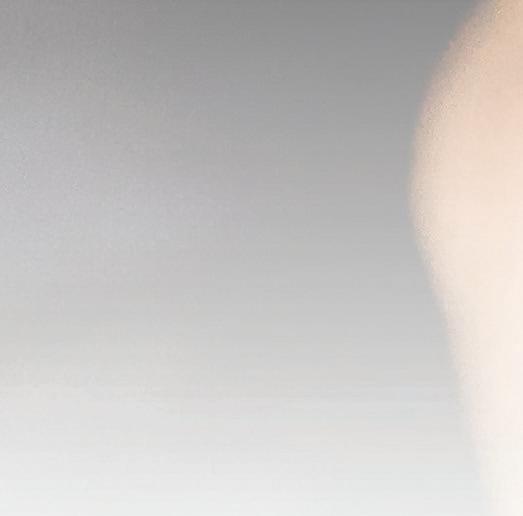





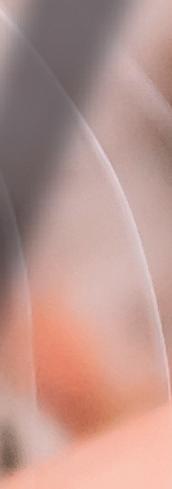
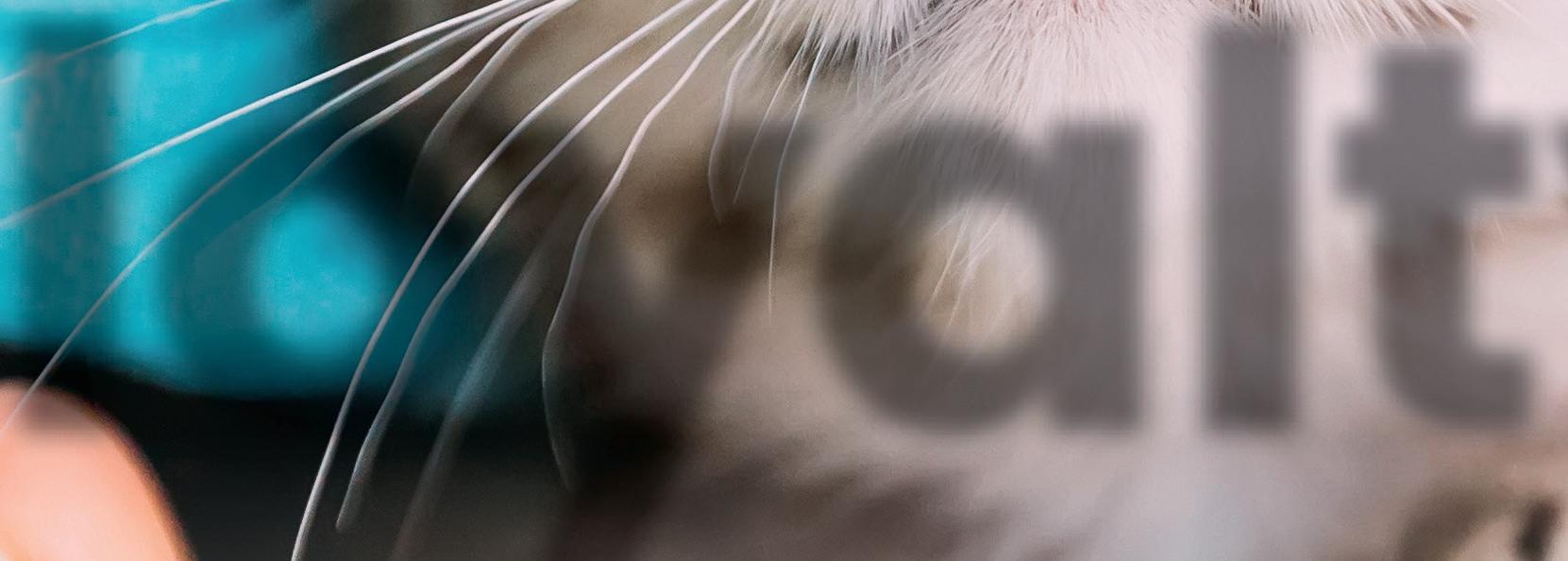
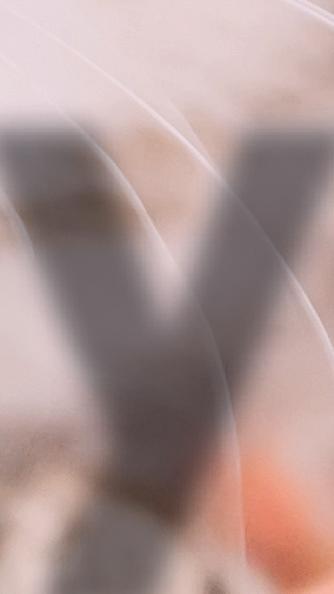



















Human-Animal Interaction in Animal-Assisted Interventions (AAI)s: zoonosis risks, benefits, and future directions - a One
Health approach
Animal-assisted interventions (AAI)s represent the expression of integrated medicine, according to the One Health approach. Actually, animal-assisted therapies and animal-assisted activities are implemented in hospitals, rehabilitation centers, etc. The efficacy of AAIs is based on interspecific interactions and would be impacted by different factors, such as the characters of both the animal and the handler, a suitable selection of animal species, an appropriate animal educational protocol, the relationship between the handler and the animal, and mutual relationship among the animal, the patients, and members of the working team. AAIs produce many advantages for the patients but could expose them to zoonoticpathogens transmission. Therefore, positive animal welfare, as preventative medicine to avoid incidents or transmission of zoonosis, isarelevant aspect with implications for human and animal health and wellbeing. This review aims to summarize the current published knowledge regarding the occurrence of pathogens in AAIs and to discuss their relevance in light of health and safety in AAIs participants. In addition, this review will contribute to defining the state of the art of AAIs through a careful benefits/challenges analysis and offers discussion points on the possible future developments according to the One Health approach.
Giovanna Liguori12,Anna Costagliola1,Renato Lombardi2, Orlando Paciello1,Antonio Giordano34
Animals (Basel).2023 May 9;13(10): 1592.doi: 10.3390/ani13101592.
1Department of Veterinary Medicine and Animal Productions, University of Napoli Federico II, 80138 Napoli, Italy.
2Local Health Authority, ASL Foggia, 71122 Foggia, Italy.
3SbarroSbarro Institute for Cancer Research and Molecular Medicine, Center for Biotechnology,College of Science and Technology, Temple University, Philadelphia, PA 19122, USA.
4Department of Medical Biotechnology,University of Siena, 53100 Siena, Italy.
Free article
Prevalence of lameness in dairycows: a literaturereview
Lameness in dairy cows has major negative impacts on animal welfare and production economy. While previous studies have evaluated the prevalence of lameness in single countries, the present literature review is the first overview of the prevalence oflameness in dairy cows globally. This literature review identified 53 studies reporting prevalence of lameness among representative samples of dairy cows and fulfilling a number of specified inclusion criteria (e.g., at least 10 herds and 200 cows, and locomotion scoring by trained observers). A total of 414,950 cows from 3945 herds were included in these 53 studies, which spanned a 30-year period (19892020) and included herds from six continents, with the majority from Europe and North America. Across the studies, the mean prevalence of lameness (typically defined as score 3-5 on a 1-5 scale) was 22.8 per cent with a median of 22.0 per cent and a range between studies from 5.1 per cent to 45 per cent, and a within herd range from 0 per cent to 88 per cent. The mean prevalence of severely lame cows (typically defined as score 4-5 on a 1-5 scale) was 7.0 per cent with a median of 6.5 per cent and a range between studies from 1.8 per cent to 21.2 per cent, and a within herd range from 0 per cent to 65 per cent. Over time, it appears that the prevalence of lameness has changed verylittle. Several different locomotion scoring systems and definitions of (severe) lameness were used across the 53 studies, and this may have affected the reported lameness prevalence. Sampling of herds and cows, inclusion criteria and representativeness also differed between studies. This review offers recommendations for the future To page 30
Mental
experiences in wild animals: scientifically validating measurable welfare indicators in free-roaming horses
The mental experiences of animals are what characterises their welfare status. The Five Domains Model for assessing welfare aligns with the understanding that physical and mental states are linked. Following measurement of indicators within each of the four physical/functional Domains (1. Nutrition; 2. Physical environment; 3. Health; and 4. Behavioural interactions), the anticipated negative or positive affective consequences (mental experiences) are cautiously inferred and assigned to Domain 5. Those inferences derive credibility from validated knowledge ofthe underlying systems of physiology, neurophysiology, neuroethology, and affective neuroscience. Any indicators used for assessing welfare need to be scientifically validated. This requires, firstly, evidence of the links between a measurable/observable indicator and the physical/functional impact (in Domains 1 to 4), and secondly, a demonstrable relationship between the physical/functional impact and the mental experience it is inferred the indicators reflect (in Domain five). This review refers to indicators of physical/functional states in Domains 1 to 4, which have been shown to be measurable in free-roaming wild horses, and then evaluates the scientific evidence linking them to inferred mental experiences in Domain 5. This is the first time that the scientific evidence validating a comprehensive range of welfare indicators has been synthesised in this way. Inserting these indicators into the Five Domains Model enables transparently justifiable assessment and grading of welfarestatus in free-roaming horses.
Andrea M Harvey1,Ngaio J Beausoleil2,Daniel Ramp1, David J Mellor2
Animals (Basel). 2023 Apr 28;13(9): 1507.doi: 10.3390/ani13091507. 1Centre for Compassionate Conservation, TD School, University of Technology Sydney,Ultimo, NSW 2007, Australia.
2Animal Welfare Science and Bioethics Centre, School of Veterinary Science, Massey University, Palmerston North 4442, New Zealand.
Free PMC article
Toxicity of house plants to pet animals
Cases of ingestion of indoor poisonous plants arerelatively common among animals and lead to both acute cases of poisoning and long-term exposure to harmful substances and chronic damage to the animal's health. Plants produce a large number of secondarymetabolites, which serve to protect the plant from attacks by insects, parasitic plants, fungi or, for example, during reproduction. However,these metabolites can be toxic if ingested by animals or humans. Toxicologically effective components found in plants are mainly alkaloids, glycosides, saponins, terpenes and others. This review article describes in detail the most common and popular indoor poisonous plants grown in Europe, the mechanisms of action of their active substances and clinical signs of the respective poisonings. This manuscript is supplemented with rich photographic documentation of these plants not found in similar articles, and also includes a description of the treatment of individual types of poisoning.
Zuzana Siroka1
Toxins (Basel). 2023 May 19;15(5): 346.doi: 10.3390/ toxins15050346.
1Department of Animal Protection and Welfare and Veterinary Public Health, Faculty of VeterinaryHygiene and Ecology, University of VeterinarySciences Brno, Palackeho tr. 1946/1, 61242 Brno, Czech Republic. Free PMC article

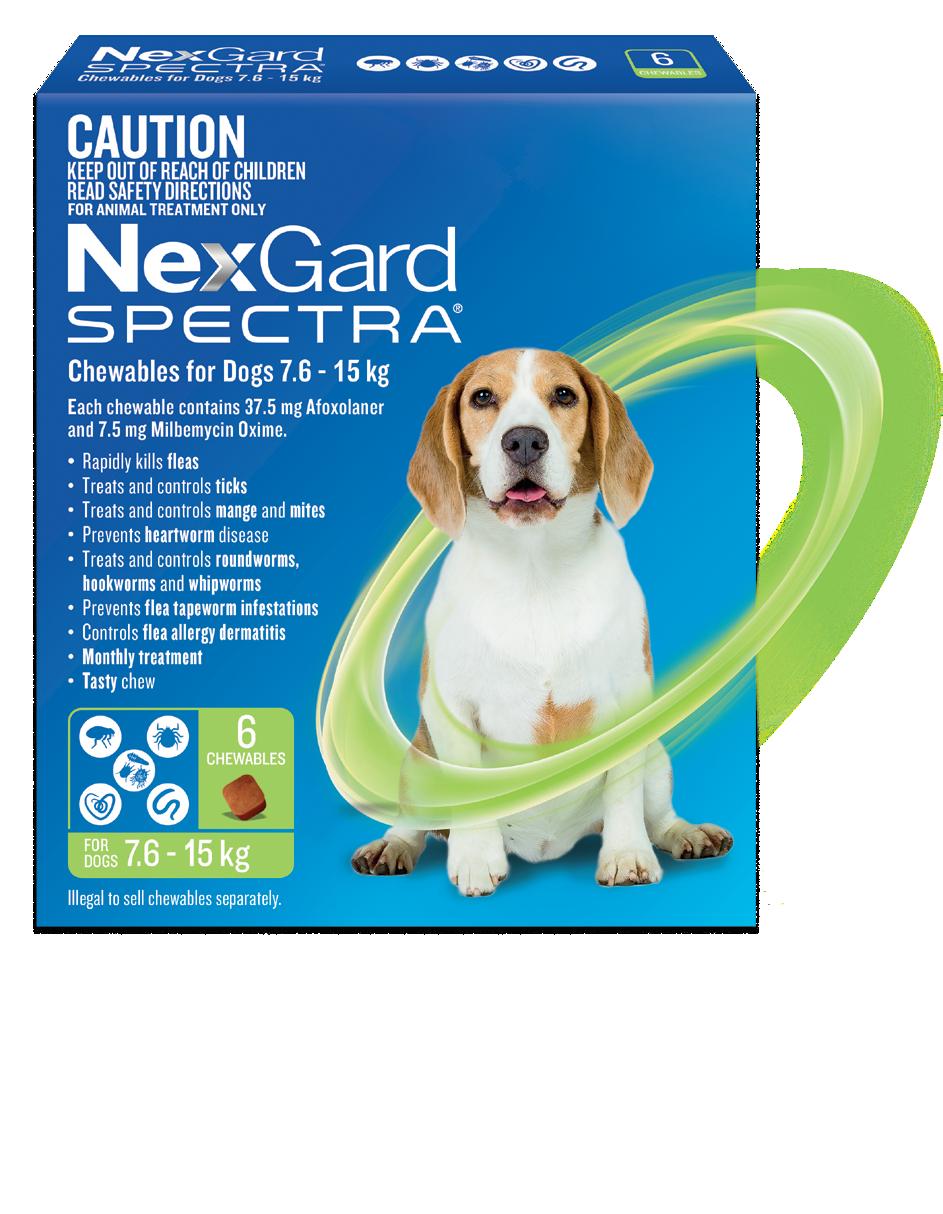

60% off with code VETMAG60
THE VET EXPO IS HEADING
18
- 19 October 2023 | Melbourne Convention & Exhibition Centre
After a highly successful launch event in Sydney in 2022, The VET Expo is excited to be returning in 2023 for an even bigger and better show!


The VET Expo is the largest veterinary and animal health event in Australia with over 4,000 attendees, 200+ speakers, 120+ exhibitors and 30+ startups. The VET Expo is unlike any other event in the industry, bringing together veterinarians, vet nurses, vet specialists, technologists, practice managers, owners, zookeepers, animal scientists, pet product retailers and more all under one roof.
The VET Expo 2023 is the perfect opportunity to network with thousands across the veterinary world, learn from major experts in seminars, earn CPD points and discover new products and services from top suppliers.
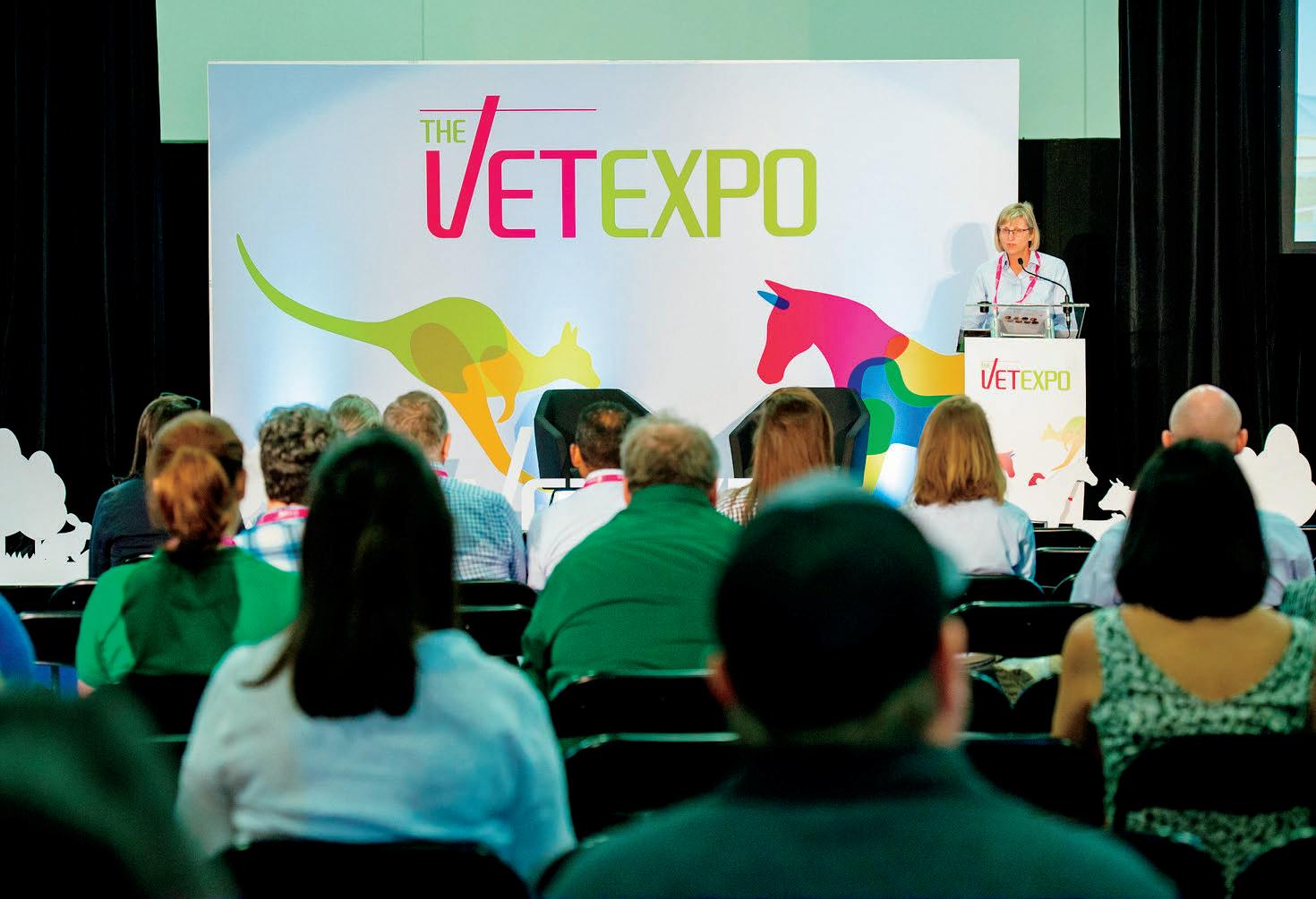

Currently all delegate passes are discounted at 30% off. As a reader of The Veterinarian, we also have an exclusive discount for you, giving you an additional 3 0% off!
Register before July 28 using code VETMAG60 to secure your attendance for both days of the conference and exhibition at a total of 60% off!
Find out more information by visiting thevetexpo.com
Sponsorship Enquiries: regina.portelli@terrapinn.com
Speaker Enquiries: benton.ng@terrapinn.com
General Enquiries: vetexpo@terrapinn.com
Introduction and our conceptual framework
Veterinarians in Australia see cryptococcosis cases and dermatophyte infections (ringworm) like most of the world, but we do not have the endemic river valley mycoses like blastomycosis and coccidiomycosis that are such an important problem in the USA. We do have pockets where histoplasmosis occurs, but they are quite localised. So, in this C&T perspective, when we talk about fungal diseases, we generally refer to random fungal diseases which might be seen anywhere in the world.
The infections we wish to concentrate in this essay are sporadic fungal diseases, usually in immune competent hosts, but sometimes in hosts that are immune deficient because of drugs administered to treat auto-immune diseases. We will also briefly cover dogs and cats with some inherited immune defects which let them develop disseminated fungal infections with pathogens that rarely produce disease in normal hosts. We will also touch upon diseases caused by oomycetes and algae, which clinically can resemble fungal infections.
Many fungal infections of soft tissues occur after penetrating trauma. This might be a stick, grass awn or a metallic object. It might also occur after a scratch or after a bite injury where two combatants roll around in the dirt. In all these scenarios, we are dealing with an immune competent host in which a heavy inoculum of fungal elements is introduced into the subcutis, with variable destruction of local tissues caused by the inciting trauma. In some situations, foreign material coated with a fungal biofilm is left in the wound, whereas in others the penetration is transient, but results a heavy inoculum of fungal spores or vegetative fungal elements being deposited in the subcutis.
Normally, an immunocompetent mammalian host is protected from potential fungal pathogens in the environment by an intact epidermis,
Sporadic fungal diseases: practical approach to diagnosis and treatment
This article first appeared in Control and Therapy and appears by permission.
usually covered by protective fur, and the action of the innate immune system. When these protective mechanisms are circumvented by traumatic inoculation, a localised fungal infection can develop. Cleansing wounds will of course decrease the chance of this occurring.
This local infection may be: (i) constrained by innate and adaptive immunity, or (ii) it might spread via the lymphatics (so called sporotrichoid spread) or (iii) by local extension to contiguous tissues, or (less likely) (iv) it might undergo widespread haematogenous dissemination, although this usually only happens in immune deficient animals.
It is not just fungi that can cause disease in this manner. The somewhat related oomycetes Pythium and Lagenidium can do the same. Indeed, both can actually set up infection even without penetrating injury, as they have motile zoospores which can penetrate skin softened by maceration. A chlorophyl-deficient algal organism called Prototheca is also capable of giving rise to subcutaneous disease after penetrating trauma.
Lesions caused by saprophytic fungi introduced by penetrating trauma tend to have certain stereotypical anatomical distributions. For example, in cats, scratch injuries to a cat’snaso-ocular region (face) can be contaminated by fungi, and also by mycobacteria and Nocardia spp –all having in common a domicile in the soil and dirt. Another common site for saprophytic fungal infection in cats is the distal limb, in the vicinity of P3 or the digital pads.
Although not the major focus of these article, mycotic rhinosinusitis (nasal aspergillosis) is another example of a localised infection (at least in the dog) in an immune competent host, although the exact pathophysiology has not been determined with certainty, but likely involves inhalation of a heavy load of fungal spores, or fungal elements on a grass seed foreign body.
Aquite different scenario occurs when the immunity of the host has been compromised. This might be an acquired problem. Dogs with immune-mediated haematolytic anaemia, immune-mediated thrombocytopenia and polyarthritis are all generally treated with a combination of corticosteroids and immunomodulatory agents such as azathioprine, cyclosporine, or mycophenolate, which comprises innate and adaptive immunity, both cell mediated, and antibody mediated.
In German Shepherd dogs, Vizslas and a variety of other pedigree and pedigree hybrid dogs, filamentous fungi such as Aspergillus terreus or A. deflectus , the capsulated yeast Cryptococcus and a wide variety of other fungi, some of which are better known a plant pathogens, give rise to disseminated disease. The likely pathogenesis of these infections is that infectious propagules, most likely fungal spores, give rise to focal mycotic pneumonia, which isclinically silent, followed by lymphatic spread to the hilar lymph nodes, and subsequently haematogenous dissemination to tissues with agood blood supply but with some vascular tortuosity, such as the bony vertebral endplates, certain other bones, the anterior uveal tract in the eye, and the central nervous system. Treatment of such infections can be especially challenging as certain immunological mechanisms that prevent fungal disease developing and help eradicate fungal pathogens are lacking in these breeds, which makes a successful outcome much harder to achieve. Furthermore, there is always the possibility for disease recurrence or the development of similar but unrelated infective insults.
Diagnostic Tips
1. Get a really good sample. Handle it carefully! It is optimal to get a sample which contains the fungal elements (yeast cells or hyphae) without getting any normal bacterial skin flora present in the overlying skin. This is because bacteria generally grow faster than fungi, although you can to some extent circumvent this by adding antibiotics to the fungal media to inhibit their growth.
Figure1. (A) This cat has a Fusarium solani infection in the naso-ocular region. This is a common site for deep fungal infections in cats, presumably as cat scratch injuries result in inoculation of fungal elements that arelocated on the nail of the perpetrator. A variety of fungi can be isolated from these type of infections, with a range of pathogens that are often refractory to commonly used antifungal drugs. Of course, you can also get unusual soil bacteria like Corynebacterium, Nocardia and Mycobacteria in this location, and herpetic dermatitis is included in the DDx. This cat responded to long term oral treatment with posaconazole (B; during therapy). Some of these cases require intralesional amphotericin B, or debulking surgery followed by reconstruction of the resulting surgical wound to effect a cure
Dogs on combination immunosuppressive regimens are not infrequently afflicted by multifocal fungal infections of the skin and subcutis, possibly as a result of abrasions from grass awns and similar penetrative vegetable matter, where the foreign sharp object is often coated with fungal spores or vegetative fungal elements. Adifferent type of immunosuppression occurs in the breed associated immune deficiency states, where some as yet to be discovered chink in the normal immune response permits normally commensal fungi or environmental saprophytes to ‘take off’. In some lines of Cavalier King Charles Spaniels and certain miniature Dachshunds, some defect in antibody or cell mediated immunity allowed Pneumocystis canis,present as trophozoites in the lung of normal dogs in exceedingly small numbers, to multiply and give rise to what is eventually life-threatening pulmonary disease, often in associate with cutaneous demodicosis and Bordetella bronchiseptica pneumonia. Recently, a Shih Tzu with Pneumocystis pneumonia was shown to have a X-linked CD40 ligand deficiency.
Figure 2. This cat has a deep soft tissue infection with a dematiaceous (pigmented) fungus – Wangiella dermatitis.This group of fungi normally live in the soil. A specialist surgeon is exploring the area and resecting all tissues which have a dark appearance from melanin imparted by the fungal pathogen. The surgeon has unfortunately placed the biopsy material on a gauze swab, which can be OK, but will sometimes prevent the growth of Mucormycetes such as Mucor as the large hyphae are easily fragmented by the cotton fibres. Better to just put the biopsy in a sterile urine container with a little sterile saline
So, to procure a good biopsy,first cleanse the biopsy site by washing thoroughly but gently with an iodinated soap, and then 70% ethanol. Allow sufficient time for the ethanol to evaporate. Then make in incision, debride the tissues, and obtain representative deep material for biopsy This might be an open surgical biopsy (e.g., Figure 2) or a core biopsy (using a skin biopsy punch (usually 6 mm or 8 mm diameter) or a spring-loaded core biopsy gun), or even just a fine needle aspirate biopsy. Often, of course, we do not know at first if a specimen will be fungal, oomycete, algal, bacterial or neoplastic.

Under such circumstances, get the biopsy specimen and cut it in half. Put half in formalin. Put the other half in a sterile urine container containing a few drops of sterile saline (to keep the biopsy from drying out). Critically, keep the unfixed portion of the sample in the practice refrigerator at 5oC(while you wait for the results of the examination of the formalin-fixed tissues).
Do NOT wrap the biopsy in a gauze swab, as this will fracture the hyphae of certain fungi and stop them growing later when they are plated out on Sabarouds dextrose agar in the laboratory.
You can start off the microbiological investigation of the lesions by using a normal histological examination of the fixed tissues (initially stained with haematoxylin and eosin (H&E); but also using special stains such as periodic acid Schiff (PAS) or Grocott-Gomori's methenamine silver stain (GMS) using the formalin fixed specimen.
1⁄2
This
Keeping half the sample in the fridge (NOT freezer!) is an effective way to preserve fungi or other infectious agents in a viable state until it is clear that you need to submit a fresh tissue specimen for mycological culture. Freezing often kills eukaryotic organisms such as fungi, although their DNA remains intact for PCR and sequence analysis.
If you are sure the infection is fungal (perhaps after seeing fungal elements in a preliminary fine needle aspirate), or if money is no object, then submit both specimens at the same time. But when doing so, it is vital to adequately seal the formalin containing specimen, or send it in aseparate plastic container, as it is very easy for leaky formalin to contaminate the sterile sample and make it useless for fungal culture.
2. Tryto get the sample to go to a reference mycology laboratory, either directly, or indirectly
Although veterinary laboratories can often do arespectable job at handling fungal specimens, if you see a reasonable number of fungal cases, there is a benefit developing a relationship with a specialist human or veterinary mycology reference laboratory. They have expertise in both classical mycology, with excellent microscopy and a broad range of fungal media and special stains, and also the most modern molecular mycology methods, including panfungal PCRs with sequence analysis and many rapid tests (IMMY lateral flow for cryptococcal antigen, galactomannan index, β-glucan, etc).
If you use a veterinarylaboratoryfor primary fungal isolation, its often much better to ask them to forward the culture plates to a reference laboratory rather than attempt to do specialist procedures like definitive identification (ID) and fungal susceptibility testing. The other benefit of a reference laboratoryit will likely have infectious disease clinicians that will be able to give you very good advice about case management, as well as the scientists (mycologists) who do the diagnostic work at the laboratory bench.
An alternative is a veterinary lab in a veterinary teaching hospital that has a special interest in fungal infections. Veterinary teaching hospitals will often have academic staff who make fungal disease their research area.
In Australia, there are several human hospital laboratories that will process veterinary specimens for a fee. The key contact people are senior hospital scientists at Westmead Hospital (Dr Catriona Halliday catriona.halliday@ health.nsw.gov.au), Adelaide Women’s and Children’s Hospital (Dr Sarah Kidd sarah.kidd@sa.gov.au ) and Concord Hospital (Evanthia Tambosis). Veterinary Pathology Diagnostic Services at the SSVS at the University of Sydney is another good place to get good mycology undertaken.
3. Try to get the lab to fully describe the fungal morphology in cytology or histology specimens Some labs just say, “fungal elements detected”. This is not helpful!
Weneed to know: Are there are yeasts or hyphae? Do the yeasts have a capsule? Is there budding? Are the hyphae branched? What angle do they branch? Are the hyphae septate? Are the hyphae thin with parallel walls, or thick and irregular or ribbon like?
behaviour are very much a feature of their normal environmental niche – rather than the host in which they cause disease.
Based on what you find – you will be in a position to choose empiric therapy. It is ideal, however, to get the reference laboratory to perform susceptibility testing, but this takes time (often 5-10 working days, or more) and you in general cannot afford to delay therapy. So, start empiric therapy, with one or more agents. You can change your drug choices in 1-2 weeks when susceptibility data becomes available. In severe or acute cases, it is vital to be aggressive and use atleast two agents, as then at least one is likely to be effective.
Delays in appropriate therapy is a common reason for treatment failure. Unfortunately, the best drugs are often the most expensive and sometimes high efficacy is associated with injectable only agents or comes at a cost of some toxicity.
When you are sure about ID and susceptibility, it is then appropriate to de-escalate and use the most cost-effective drug(s) that are likely to work.
pyelonephritis. DiffQuik stain of a cytospin preparation. Note the verybroad ribbon-like hyphae, suggesting of a Mucoromycete. Culture PCR and sequence analysis was diagnostic of Lichtheimia corymbifera. The cat was treated with posaconazole based on susceptibility testing, although the cat succumbed. Most antifungal drugs do not reach sufficient concentration in the glomerular filtrate to effectively treat mycotic pyelonephritis
If you have a good morphological description –you can often guess the general class of fungus, which will help you select the best empiric agents for therapy.If the lab will not do this for you, find another lab!
It is bad medicine and generally poor value to choose a drug because its less expensive and hope it might help. It is much better value in the long term to choose a drug which is expensive but likely to get almost all fungal pathogens. In 2022, usually that is drug posaconazole
5. Learn about rapid tests for endemic fungi likely to be encountered where you practice
In Australia, cryptococcosis is the most common systemic mycoses in cats and probably dogs. The same is probably true in California and British Columbia in Canada. It is even more common in native Australian animals such a koalas. Obtaining representative material from nasal exudate, nasal washings, bronchoalveolar lavage fluid specimens or fine needle can often provide a rapid diagnosis because of the very characteristic organism morphology in smears stained with rapid Romanowsky stains such as DiffQuik (see Figure 6).
4. Choosing empiric therapy and obtaining susceptibility data
Once you get a definitive identification of the fungal pathogen, ideally from a reference laboratory,do a key word search in Google Scholar or a PubMed search engine to find some recent veterinary or human papers on management of the pathogen. If they are behind a paywall – just fire me an e-mail and i will get them for you.
Each fungal pathogen behaves similarly in animals and man – so both human and veterinarypapers are equally germane to you cause. Even a horse paper might be informative for a companion animal clinician, and vice versa. For some unusual fungi, there may only be human papers. The reason the host species is less important is most fungi are environmental –and so their biology,resistance pattern and
There are exceptionally good rapid tests for this pathogen, of which the IMMY lateral flow was the first to appear on the market and to date its performance appears to be superior to the many imitators that have appeared subsequently. This test uses immunomigration technology (immunochromatography) to detect nanomolar concentrations of polysaccharide fungal antigen. The authors strongly recommend that this test be used before doing expensive testing such as cross-sectional imaging (CT,MRI) or endoscopy, as cryptococcosis is sufficiently common in endemic areas that an inexpensive screening test is worthwhile. The IMMY lateral flow tests is highly sensitive but only moderately specific, and this is the quality one needs for a screening test. By this, we mean that false positives do occur. Positives need therefore to be confirmed by latex cryptococcal antigen agglutination testing, or by obtaining material for cytological examination and/or culture.
IMMY style tests can be done cage side in the practice. A similar test is available to diagnose histoplasmosis using urine as the diagnostic specimen. Histoplasmosis is rare and sporadic in Australia, so this test is rarely used, although it is widely used in the USA in places where histoplasmosis is endemic.
Treatment Tips
1. Treating dermatophyte infections
Perhaps the most common fungal infection of cats and dogs are dermatophytes, especially in young patents. The most common of these is the animal adapted organism Microsporum canis. Much less common are soil associated organisms such as Nannizzia gypsea , (formerly known as Microsporum gypseum). The diagnosis and management of dermatophytes deserves a full
Book Sydney here: https://www.ava.com.au/
NEUROLOGY SERIES
MEL SYD BRIS
Book Melbourne here:
Book Brisbane here:
VETERINARY IMAGING SPECIALIST




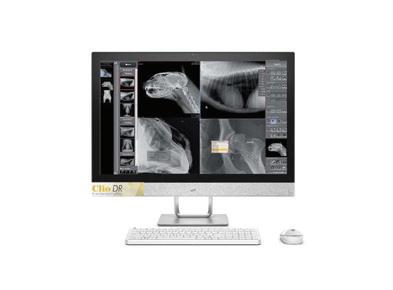

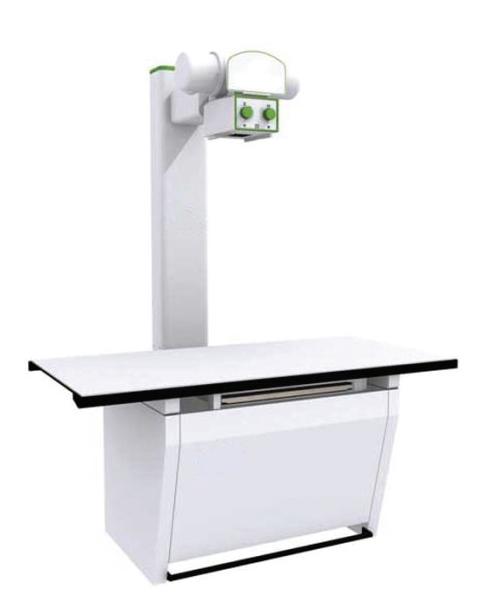

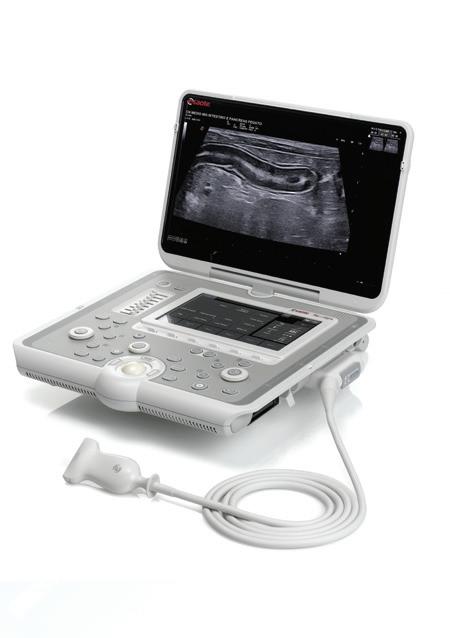

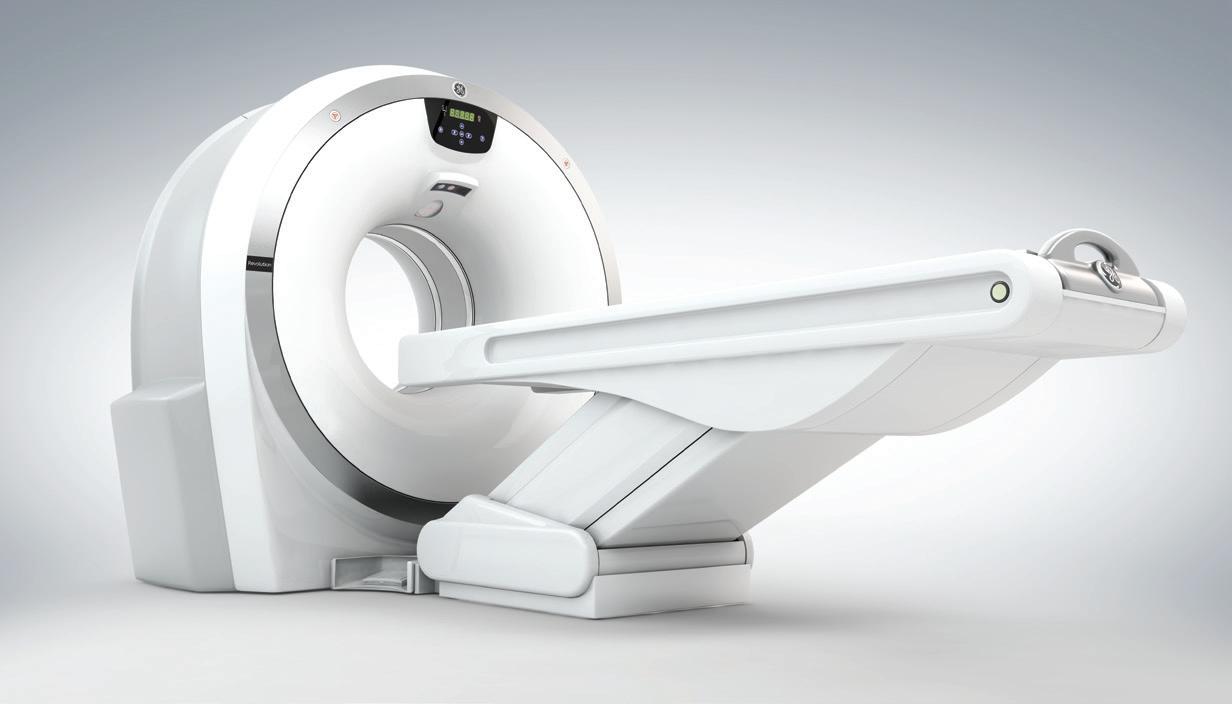

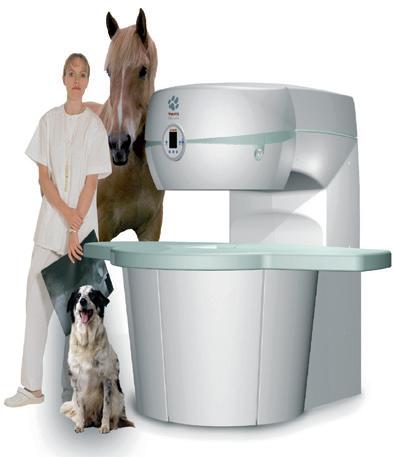



article. It is worth mentioning, in passing, that diagnosis can now be performed by PCR testing as well as traditional and widely known known diagnostic testing including fungal culture in the practice (Fungassay®) or in the diagnostic laboratory (dermatophyte test medium).
There is an incredibly good general article on management of dermatophyte infections by Karen Moriello, Kim Coyner, and colleagues available as an open access free download at https://onlinelibrary.wiley.com/doi/full/10.11 11/vde.12440.
The most common fungal pathogens encountered are likely influenced by geographical considerations such as soil types. For example, in Sydney, NSW, Australia a very unusual dematiaceous (pigmented) fungal pathogen Microsphaeropsis arundinis is the most common cause of soft tissue infections in cats. It also occurs in human patients, and to date, 1 dog. It is thought to be common here because of its relationship as a pathogen of the garden escape weed known colloquially as Elephant grass. But many different fungi can be involved, including the especially nasty pathogen Fusarium. The range of potential pathogens is so large that it is impossible to choose a single antifungal agent that will cover all possibilities. But our considered advice is that posaconazole is a particularly good agent to use for empiric therapy while awaiting culture and susceptibility results
In many instances, surgical debulking has a place after preliminary antifungal therapy. It is generally best delayed until after you have obtained susceptibility data for the pathogen, so you can make sure you have established effective blood levels of an appropriate antifungal during surgery, and CRITICALLY, during the healing stage following reconstruction of the surgical wound.
Original products
■ Noxafil Oral Suspension MSD $888.90 plus 10% GST
■ Noxafil tablets MSD 100 mg 24 838.95 plus 10% GST
Generics
■ Pharmacor tablets 100 mg 24 $169.99 plus 10% GST
■ ARX MR tablets 100mg 24 $332.65 plus 10% GST
Debulking fungus impregnated tissues, followed by wound reconstruction, is a highly effective way to progress therapy in cases with extensive disease. Sometimes the surgery can also remove foreign plant material which actually introduced the fungal inoculum into the host tissues. By cytoreducing the extent of infection, the infective agent is better exposed to high levels of antifungals in the patient’s blood.
Note that the doses of itraconazole used for treating dermatophytes (typically 5 mg/kg of Sporanox) are substantially lower than those used for systemic mycoses, as dermatophyte infections are usually limited to the skin, and itraconazole is concentrated there because of its high lipid solubility.
Therefore, do NOT use low dermatophyte dose regimens for itraconazole when treating more invasive infections. Use at least 5 mg/kg twice a day, or 10 mg/kg once a day.
Itraconazole should be given with food to enhance its absorption
Posaconazole is a second generation triazole agent. It is an exceptionally safe drug and tends to be verywell tolerated. It is generally given orally once daily.Cats and very small dogs are best treated using the suspension, whereas in dogs the sustained release tablets represent the most cost-effective way to administer this agent. It has a ver y broad spectrum of activity. It use to be very expensive, almost prohibitively expensive, but it has come out of patent in 2022 and several generic formulations of the sustained release tablets are available – and they are affordable and cost-effective. THIS IS REALLY A GAME CHANGER – as it means posaconazole is affordable therapy everyfor long term in large dogs. Note that the tablets cannot be scored in any way – to dose smaller animals, use the 100 mg dose but give it every second day or even everythird day.
The suspension is generally used in cats and small dogs at a dose rate of 8 mg/kg once a day, whereas the dose of the sustained release tablet is 5 mg/kg every day, or every other day, depending on whether you need really high blood concentrations. The drug levels obtained in individual patients can be unexpectantly high or low, such that measuring blood levels is a verycost-effective exercise. This is known as therapeutic drug monitoring (TDM), available in the pharmacology department of St Vincents Hospital in Sydney and it is highly recommended for all antifungal drugs, especially expensive drugs, and drugs with potential toxicity.
Atop tip for treating most fungal diseases is the drug levels in actual patients can be unexpectantly high or low, such that measuring blood levels is a verycost-effective exercise, and this is known as therapeutic drug monitoring (TDM).
Level too high –sometimes risks toxicity for some drugs. Level too low – drug will not work!
2. Treating soft tissue infections followin penetrating trauma with posaconazole ±terbinafine
Subcutaneous and cutaneous infections can occur in dogs and cats after penetrating injuries with sharp objects, such as sticks, plant awns and barbs and sharp metallic objects, and after cat scratches and animal bites contaminated by dirt. Awide range of fungi can be implicated.
Drugs commonly assayed for TDM include fluconazole, itraconazole, voriconazole and posaconazole. TDM is not widely used for amphotericin B, flucytosine or terbinafine.
Often to broaden the spectrum of antifungal activity further, terbinafine is added to posaconazole in a combination therapeutic regimen. Terbinafine is available as a generic drug and is therefore much cheaper.
Fluconazole is often used erroneously as it is inexpensive. This is a false economy and acommon reason for fungal infections progressing when they might have been arrested by more effective agents.
3.Intralesional amphotericin B as an adjunct to oral antifungal therapy
What do you do when the infection is present on an extremity, such as the nose or a distal limb, where debulking surgery is difficult to impossible, without recourse to amputation? This is not an unusual scenario!
Aspecialist surgeon has the ability to use an Esmarch’s bandage as a torniquet and resect infected tissues and reconstruct the wound via fusion podoplasty, but this technique is possibly beyond the ability of an average practitioner.
A‘trick’ which can be useful in such a setting is the use of intralesional amphotericin B. This agent is traditionally used systemically for life-threating fungal infections such as cryptococcosis, but Brazilian veterinarians have adapted a human procedure for treating refractorycases of feline sporotrichosis on the face near vital structures such as the nose and the eyes. Intralesional amphotericin, using a concentration of 2.5 to 5 mg/mL of amphotericin diluted to a volume of 2-3 mL can be used to infiltrate any fungal infected tissues and administered on a once weekly basis (or more often if necessary) under heavy sedation or light general anaesthesia. This has a potent local antifungal effect and is a nice intensive treatment for extra efficacy on top of oral therapy with posaconazole and terbinafine for a variety of fungal pathogens capable of causing lesions of the distal limbs or naso-ocular region.
safety, efficacy and good penetration of the CNS and eye make it the backbone of therapy. It has very little use for most other fungal infections. Itis occasionally used for dermatophytes where its major advantage is low cost, but it does not concentrate in the skin like itraconazole.
Itraconazole has a much wider spectrum of activity compared to fluconazole and is effective for treatment many fungal infections including sporotrichosis, blastomycosis, histoplasmosis and coccidiomycosis. Indeed, treatment regimens have been developed for treating these so-called river valley mycoses using itraconazole based on compelling evidence in the form of extensive case series. The original drug was developed by Jansen Cilag, with a capsule formulation and a liquid formulation, the latter having superior pharmacokinetics in companion animals. The capsules when opened contain many specially formulated little white spheres which can be mixed in with a cat or dog wet food, and this is aconvenient way to administer therapy. There are some good human generic formulations of itraconazole but beware compounded itraconazole.
InAustralia, we have a unique formulation of itraconazole called Lozanoc with superior pharmacokinetics as a result of improved bioavailability; there is much greater consistency in achieving therapeutic blood levels, and a dose of 5 mg/kg of Lozanoc is used equivalent to 10 mg/kg of Sporanox.
Itraconazole is an exceptionally difficult drug to compound, and treatment failures are often a direct result of using compounded itraconazole formulations that have poor bioavailability. DO
There are, however,some potential problems with itraconazole. When treating invasive fungal disease, doses of the order of 10 mg/kg once a day or 5 mg/kg twice a day are commonly used. It is not uncommon for such doses to cause clinically significant hepatotoxicity during a long course of therapy. This can be detected early by monitoring the ALT activity in plasma, which rises gradually before icterus and anorexia develop. Many internists administer liver tonics such as S-adenosyl methionine at the same time as itraconazole in an attempt to prevent liver injury, and anecdotally, this strategy appears to be successful. It is the view of this authors, however, that is most clinical situations it is better to use voriconazole or posaconazole at recommended doses based on in vitro susceptibility testing combined with TDM, rather than using this older agent. Itraconazole can occasionally cause severe cutaneous vasculitis.
neoplasia, so dogs on voriconazole should probably be kept indoors during the heat of the day, especially breeds not afforded the protection of a generous hair coat. Another advantage of voriconazole is it is good at reaching effective CNS levels because it readily crosses the blood brain barrier, a conspicuous advantage over posaconazole.
Voriconazole despite a slightly narrower spectrum and potential toxicity issues, is an important antifungal especially in the dog with systemic disease. Like posaconazole, it is often combined with oral terbinafine, and in some cases with parenteral amphotericin B.
5.Amphotericin B – an old drug but a particularly important agent for severe disease
When fungal infections are severe, advanced, disseminated or involve the CNS, amphotericin B remains an important drug, and indeed, often the most important agent.
It was one of the first drugs to be used for systemic fungal infections and comes with a reputation for nephrotoxicity. This can be largely circumvented by using the liposomal formulation AmBisome, although this is a very expensive drug and beyond the resources of most owners and requires intravenous access for administration. Liposomal amphotericin B continues to be expensive due to high manufacturing costs even though its patent has expired. There are also lipid complex formulations that are available for IV use in the USA, however they are not used in Australia, and we have little experience with them.
The original deoxycholate preparation of amphotericin B is much more affordable and can be given by other routes as well as intravenously,and this is the formulation with which we have had the most experience. And although this experience is anchored in cats and dogs, it extends to native animals and zoo patients, including koalas with cryptococcosis.
4. What about fluconazole, itraconazole, voriconazole and isavuconazole for systemic therapy of fungal disease?
Fluconazole and itraconazole were the first two triazole antifungal agents. The original azole antifungal ketoconazole is no longer available, except from compounding pharmacists.
Fluconazole is active largely against yeasts, such as Cryptococcus spp and Candida spp. Its leading role is therefore in treating Candida albicans and other susceptible Candida species, and in the management of cryptococcosis. It is a narrow spectrum antifungal. It is very safe, and widely available as generic formulations which are cost effective, but it generally has almost no efficacy against filamentous fungi like Aspergillus spp and other soil-dwelling fungi likely to be seen after penetrating trauma. It is a very important drug in the treatment of cases of cryptococcosis that are mild to moderate and in which there is no CNS involvement. In such cases, its low cost,
Voriconazole is a second generation triazole agent with much enhanced activity against many fungi (including most members of the genus Aspergillus)compared to itraconazole. It is water soluble, and out of patent, so there are cheaper generic formulations available which are more affordable than the original drug developed by Pfizer.Voriconazole is a highly effective drug against Aspergillus species, with comparable efficacy to amphotericin B. But voriconazole is not as forgiving an agent to use as posaconazole. High doses can cause delirium and visual hallucinations in human patients, and in cats, high doses can cause serious neurological signs including seizures. Most likely, this could be avoided by careful TDM and gradual dose escalation, but many feline practitioners prefer to just not to use voriconazole. It is a useful dose in the dog, but drug levels are hard to predict, even when using studies of pharmacokinetics in normal dogs as a guide, and in the opinion of the authors, TDM is mandatory.The drug is also known as a potent photosensitiser, and in human patients its use combined with UV exposure can result in actinic damage and even cutaneous
In patients with severe disease, such as disseminated cryptococcosis (often with ocular and/or CNS involvement), amphotericin B is usually given intravenously for the first week of therapy. The protocol for its use is widely accessible in infectious disease textbooks. Usually, daily doses of 0.5 to 1.0 mg/kg are given as a continuous rate infusion continuously intravenously (IV). If owners are exceptionally wealthy or the animal is generously insured, liposomal amphotericin can be used with less risk of acute kidney injury, at a daily dose of 2-3 mg/kg. Note that all formulations of amphotericin B are equally effective, the advantage of liposomal and lipid complex formulations are just reduced kidney damage as the lipid liposomal wall prevents the kidney “seeing” the active drug, which is delivered to the fungus inside macrophages.
Once the dog or cat is well enough to go home, we generally swap from IV therapy to subcutaneous infusions twice weekly. The rationale of the subcutaneous bolus infusion is based on slow absorption of amphotericin from a dilute subcutaneous reservoir This largely circumvents the propensity towards nephrotoxicity, especially in the dog, which is usually young and therefore tends to have more resilient kidneys compared to an older cat.
The subcutaneous amphotericin B regimen works very well in the dog and in young cats, but in older cats that usually have lost some renal reserve, you need to be careful to ‘back off’ therapy when the serum urea and creatinine concentration creep up. For some reason, it is the serum urea concentration that usually increases first rather than creatinine.
Over the last few years – we have started using intraperitoneal (IP) dosing rather than subcutaneous administration in some patients, usually larger dogs. This can be facilitated by sedation in
unruly patients. IP administration is faster than IV, and you avoid the propensity for subcutaneous lumps or sterile abscesses developing, although there can be mild chemical peritonitis. But it is a worthwhile option in some patients, especially dog breeds with thin skin that seem more likely to get subcutaneous reactions, such asBoxers and greyhounds.
Over the last few years, we have been giving amphotericin B infusions INTRAPERITONEALLY (IP), usually under sedation. The advantage of this IP route is that the fluids can be given faster (but make sure you microwave the fluids first so they are at about 37 degrees C) and that sterile subcutaneous abscesses which can occur with subcutaneous infusions are circumvented. We have also used higher concentrations of IP amphotericin Bfor treating invasive sparganosis.
As an aside – vets who train in Brazil often use IP fluid therapy rather than SC fluid therapy– for the same reasons, speed of administration and faster absorption of the fluids.
6. What about 5-flucytosine (5FC) &potassium iodide?
5FC is an extremely useful drug in human and feline patients with cryptococcosis, as the drug acts synergistically with amphotericin B. Its downside is that it is expensive, can be hard to source, and it must be given at least three times aday and possibly four times a day.
We find it extremely helpful for cats with cryptococcosis that is disseminated or if they have CNS involvement. But unfortunately,it is notahelpful drug in the dog, as almost all dogs given this drug develop a drug reaction resembling toxic epidermal necrolysis after about 7-10 days of combination therapy. This is a severe cutaneous disease which represents a substantial set back during early therapy, and basically it precludes the use of %FC in canine patients.
5FC is a useful drug in cats with severe cryptococcosis but cannot safely be used in dogs together with amphotericin B for more than 7 days because of the development of a skin eruption resembling toxic epidermal necrolysis.
Saturated potassium iodide is an old-fashioned antifungal and antibacterial agent used to treat diseases such as actinobacillosis (wooden tongue) and actinomycosis (lumpy jaw) in large animals (cattle), and fungal diseases such as sporotrichosis and Conidiobolus and Basidiobolus It has proved a cost-effective treatment for sporotrichosis in Brazil when S. brasiliensis is a hot feline and human pathogen. KI is usually combined with other antifungals such as itraconazole. Later, we will talk about the place of Ki intreating pythiosis, as it has been successfully used for treating ovine pythiosis in some settings.
7. Beware spurious isolation of fungi from clinical specimens.
Fungal spores are everywhere!
If you do not clean your air-conditioners often –they will be all through the veterinary hospital. They can also be widely present in veterinary microbiology laboratories. As a result, it is not difficult for fungal spores to make their way into clinical specimens that are then plated out on fungal media such as Sabouraud’s dextrose agar,or even on routine media such as blood agar. (After all, this is how Alexander Fleming discovered penicillin!).
Sometimes the growth of these spores in culture can result in an erroneous diagnosis of fungal infections when no infection exists.
Inour experience, this is most common in samples obtained from the respiratory tract by bronchoalveolar lavage or deep unguided bronchial washings. A recent cases the authors consulted on was a small dog where Purpureocillium lilacinum (formerly known as Paecilomyces lilacinus)was cultured from a deep bronchial washing in which eosinophils were the predominant inflammatory cell present. The dog had nodular lung disease. We wasted time and money treating this alleged infection with voriconazole, only to eventually conclude it was likely a contaminant. To be certain, we repeated the bronchial washing – and on the second occasion eosinophils persisted, but no fungi were cultured. The dog responded rapidly to prednisolone, the presumptive diagnosis being eosinophilic pneumopathy. Mea culpa!
The authors are also aware of a scenario in a tertiary referral centre where the samples from several endoscopes were contaminated with various fungal species. This problem was resolved when hospital infection control officers and nursing staff were made aware of the problem by the diagnostic laboratory and improved routine cleaning practices.
To diagnose a fungal infection, it is critical to establish that fungal elements are present in the original smears from the site of infection, inthis case smears made from cytospin preparations of BAL fluid. If a true fungal infection exists, there should be yeasts or hyphae in evidence (occasionally this is not the case when samples are collected from sterile sites such as CSF).
Spores in small numbers are usually not evident in smears, but they will grow on culture. Do not be too fast to blame the laboratoryfor growing a contaminant, as in our experience most contamination actually occurs in the veterinarypractice. A common site of contamination is endoscopes used for bronchoscopy or rhinoscopy that are not cleaned assiduously enough. To avoid this problem, always submit a sample of sterile saline aspirated through the endoscope for culture as well at the actual BAL sample, to make sure your scope is not contaminated!
3. Arethereany new treatments for pythiosis and lagenidiosis (oomycete infections) in dogs, cats and horses?
Pythium and Lagenidium species are oomycetes that are distinct from fungi in terms of their basic biology,being parasites of plants. They both are capable of producing refractory disease of the skin and/or alimentary tract. They establish infections using motile zoospores as their infectious propagule, and infections are most common in warm moist environments such as Texas and Louisiana in the USA and far north Queensland and the Northern territoryin Australia. Infections can involve the gastrointestinal tract, the skin and subcutis, or both these tissues.
Recently,the use of Metalaxyl or its optically active stereoisomer mefenoxam has greatly improved the progress for pythiosis in animals, although publications are scant.
Oomycetes have broad irregular hyphae which are somewhat characteristic, and they grow well on routine media. These infections have traditionally had a very guarded prognosis, with treatment involving a combination of debulking surgery and azoles such as posaconazole combined with terbinafine.
Metalaxyl and its active optical isomer mefenoxam are used for treating oomycete infectionin plants, so they are very inexpensive compared to antifungal drugs designed for human patients. This in itself is a huge advantage for therapy, especially in larger patients as posaconazole and terbinafine can be cost prohibitive.
Metalaxyl or mefenoxam can be used alone or combined with triazoles or terbinafine. There is also an experimental literature that suggests azithromycin, minocycline and linezolid (conventional antibiotics) are effective at killing Pythium. Corneal infections in people have been managed with combinations of topical linezolid and azithromycin combined with systemic azithromycin, and sometimes voriconazole topically. In sheep with nasal pythiosis, oral potassium iodine has been used successfully astherapy. Although a definitive treatment regimen has not been developed for disease in dogs and cats, the combination of mefenoxam plus KI and azithromycin is an attractive combination as all the medications are inexpensive. Our experience has been mainly in cats and dogs with cutaneous and subcutaneous disease, and we have used Metalaxyl or mefenoxam both topically and systemically (5 mg/kg orally twice daily). Topical treatment involves using concentrated Metalaxyl soaked swabs bandaged over the affected regions, with bandages changed daily or every other day.
There is also a highly effective immunostimulant vaccine available from Dr Mendoza in the USA and from Dr Mark White in Australia which can be very useful in jurisdictions in which is obtainable. The vaccine is most effectively made from the isolate causing the actual infection, and it is prepared by contacting Dr Mark White atmark@treidlia.com.au. Ideally, Mark needs apure culture of the oomycete from the patient to be sent to him, and he formulated the vaccine using that isolate, a bespoke vaccine.
So, it is highly likely that over the next few years the guarded to grave prognosis for oomycete infections will improve substantially. For some reason, we ver y rarely see the gastrointestinal cases of pythiosis seen in the USA and Hong Kong, although we have seen one dog from the Northern Territorythat initially had cutaneous disease, and later developed colitis.
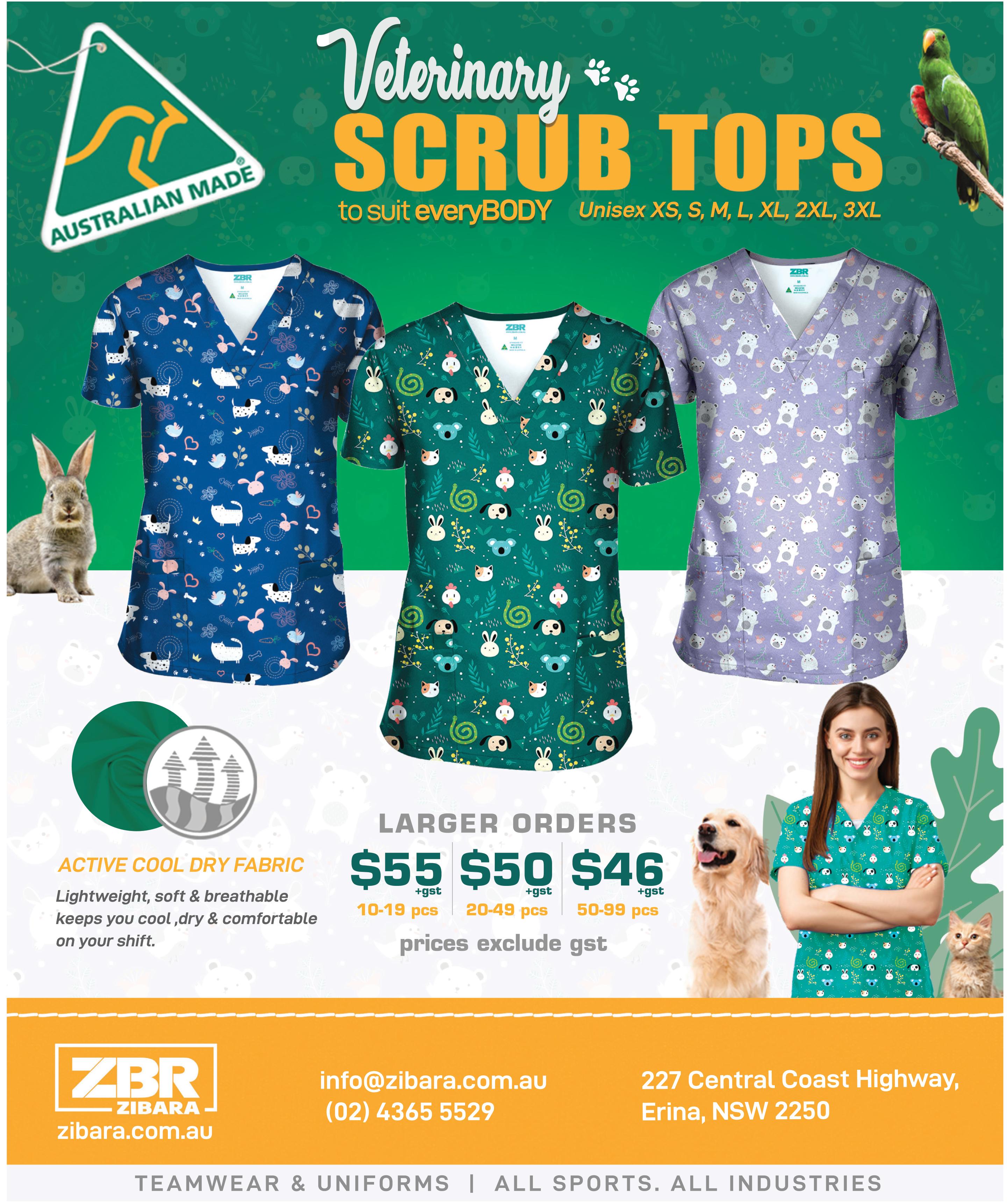
Many animals were impacted by the floods that we have had on the north coast of NSW, with several horses developing lesions suspicious of‘swamp cancer’ (pythiosis or lagenidiosis) on their distal limbs. In collaboration with Oliver Liyou (well-known quine dentist) and Rosemary Cumings (an equine internist at Scone Equine Group) , we have used Metalaxyl or mefenoxam as topical spray to prevent pythiosis developing ortreating early cases – with good effect.
5.New drugs on the horizon
Isavuconazole is the most recently released azole antifungal. It is a safe agent with an extremely broad spectrum of activity, with efficacy against some fungi where other azoles are ineffective. It’s expensive and its kinetics are unknown, but it might prove to be a useful agent in cats and dogs were unusual fungal infections. In people, it is useful for aspergillosis and mucormycosis. There is a pile of exciting new antifungal agents that should soon be on the market, and these will improve our ability to deal with many resistant and hard to treat pathogens. Amongst these, fosmanogepix and olorofim are two of the stand-outs. They will of course be expensive, but they should prove particularly useful for cryptic Aspergillus species such as A. felis and for Scedosporium and Lomentospora infections which can be extremely challenging to treat using current agents.
Some unusual fungal and algal infections
Diagnosis and treatment of pneumocystis
pneumonia (PCP)
Pneumocystis canis isahost adapted fungus that is part of the normal lower respiratory mycobiome in many dogs and cats. Indeed, just about every mammalian species has a host adapted Pneumocystis species. With a normal immune system, small numbers of trophozoites or cysts (ascii) persist in the alveolar spaces but do no harm. But in certain breeds with inherited immune deficiency states, especially Cavalier King Chares spaniels, miniature dachshunds, and their hybrids, the trophozoites can multiply unchecked and cause disease. This can also occur in dogs of a normal genetic makeup when subjected to immunosuppressive therapy, including drugs like Apoquel.
WEAR SAFETY GOGGLES AND GLOVES WHEN PREPARING AND APPLYING AND ADVISE OWNERS TO DO THE SAME!!!!
The ocular toxicity is the highest rating (like for many household cleaners/agricultural chemicals we use frequently) and it is not worth risking a splash injury. If any gets in a person's eye, they should immediately wash the eye out then go to the hospital for high volume lavage. Similarly, do not spray it on the horse's face if they have a lip lesion, just dab it on and I would not apply this near ahorse's eye in case it dripped in. Dilute 1:1 with water.It is stable in water for a prolonged period of time and is not degraded by light so you could mix up 150ml, 500ml or 1L depending on the lesion size you are dealing with and either store it in a spray bottle or in a sealed container full of gauze swabs for ease of use. I would use distilled water, water for injection or even just bottled drinking water ideally in case of contaminants in the tap water after the floods that could grow in the container.Clean any debris/ discharge off the surface of the swamp cancer lesion with saline or water. Put a rim of Vaseline around the lesion if the skin is already flood damaged and doesn't have hair left to protect it. Place 1-2 gauze swabs soaked in the solution on the lesion and bandage in place OR spray the lesion surface it is bigger/not in a spot that can be bandaged. Repeat application daily. Continue to monitor the swamp cancer and treat as you normally would with your usual medical therapy/immunotherapy and if the lesions are failing to respond (will likely take a long time to completely resolve but you would hope to see some initial shrinking after 3-5 days based on the dogs) then make sure you consult a surgeon re excision/ongoing treatment plan.
Diagnosis is usually suggested by the breed and sometimes the antecedent administration of immunosuppressive medications (corticosteroids, toceranib, cyclosporine), and by the presence of characteristic radiological changes in chest radiographs and CT scans. Chest X rays tend to show a characteristic dense interstitial pattern, sometimes accompanied by right sided heart enlargement (cor pulmonale) due to pulmonary hypertension. CT shows a characteristic ground glass appearance of the pulmonary parenchyma.
In dogs, PCP is mainly seen in Cavalier King Charles Spaniels, miniature Dachshunds, and their hybrids. An increased suspicion for this diagnosis in young member of these breeds with lower respiratoryissues is a key to early diagnosis. There os often concurrent infection with Bordetella bronchiseptica,and sometimes a history of demodectic mange currently or historically.
Panfungal PCR and PJP PCR (for the human organism Pneumocystis jirovecii) do not detect P. canis, and although canine specific PCR primers have been published by Patrizia Danesi and colleagues. Recently, a pan-Pneumocystis PCR for all Pneumocystis species has been developed at the National Institute of Health in the USA. Confirmation of a diagnosis of PCP pneumonia typically relies on seeing the organisms, yet only the cysts (ascii) (rather than the trophozoites) are readily seen in stained cytocentrifuged BAL specimens or deep bronchial washings.
Real time qPCR for PCP is available at Istituto Zooprofilattico Sperimentale delle Venezie, Legnaro (PD), Italy, although hopefully specialist veterinary PCR labs will offer this as a test in the near future, hopefully multiplexed into their respiratory PCR panels.
Treatment is well worth attempting. High dose trimethoprim sulpmethoxazole remains the drug of choice, and ideally it should be given intravenously to achieve high blood levels. It is important that this large animal formulation
is highly suggestive of PCP pneumonia in one of the susceptible breeds. Usually, cor pulmonale is present also
be available for companion animals as parenteral therapy offers important advantages over tablets for preliminary intensive therapy. In time, the use of intravenous echinocandin therapy (e.g., caspofungin, micafungin, anidulafungin) might also find a place in treatment of these cases. Monitor Schirmer tear test readings as ketatoconjunctivitis sicca due to TMS can develop during the course of therapy.
Having large animal formulations of trimethoprim sulpmethoxazole suitable for slow intravenous injection is extremely helpful for treatment of PCP in dogs. Parenteral therapy offers important advantage in terms of rapidly achieving high blood and tissue level in critically ill oxygen-dependent patients with PCP pneumonia.
If there is a strong index of suspicion for PCP pneumonia in a dog due to P. canis, do not feel an obligation to confirm a diagnosis by BAL fluid examination and PCR. These procedures require general anaesthesia typically and this is sufficient to decompensate this type of patient. A fine needle aspirate biopsy from a severely portion of affected lung can be asafer way to obtain material for cytological examination or PCR, and perhaps throat swabs might be sufficiently sensitive if subjected a qPCR assay.
There is nothing wrong with making strong presumptive diagnosis and embarking on therapy, as the diagnosis is quite likely when characteristic imaging findings are present in breeds that are predisposed to this condition. Remember that co-infection with Bordetella bronchiseptica is common, so it often worthwhile to add doxycycline to the therapeutic regimen.
Disseminated fungal disease in German Shepherd dogs, Hungarian Vizslas and other breeds
One of the most vexing entities for companion animal veterinarians to treat is widely disseminated disease due to a variety of fungi, most commonly Aspergillus terreus.German Shepherd dogs (GSD) and possibly Hungarian Vizslas have some inherited immune defect which makes them especially susceptible to fungal pathogens. Sporadically the same problem is seen in individuals of other breeds.
It is thought that infection starts by inhalation of a large dose of fungal ascospores which lodge in the alveoli. After germination and early hyphal formation, the infection spreads to the hilar lymph nodes.
From there infection spreads to a variety of well perfused tissues characterised by vessel tortuosity. Often the lesions in the lungs have healed by the time clinical signs emerge. Clinical signs reflect where the infection has disseminated to – vertebral and appendicular osteomyelitis, discospondylitis, anterior uveitis, meningoencephalitis and mycotic pyelonephritis are the most common clinical manifestations.
Aspergillus, Scedosporium and related fungal have a predilection for blood vessel walls, and infection can tract along large arteries and give rise to aneurysmal dilatations. The diagnosis of these infections is not difficult if one has a good appreciation of the “illness script” and a high index of suspicion for a fungal aetiology.
Cytospin examination of urine for fungal hyphae in wet preparations of after staining with DiffQuik can be a very cost-effective way to obtain a diagnosis. Determining the serum galactomannan index can also be very efficient diagnostically. The diagnosis can be more difficult if an unusual breed is affected or if the fungal pathogen is unusually exotic.
Management of these cases is challenging. The underlying immune defect cannot be fixed, so there is compete reliance of antifungal therapy for disease control. The presence of unilateral or bilateral mycotic pyelonephritis mitigates against the use of amphotericin B, although perhaps liposomal formulation can beused at reduced doses.
Diagnosis and treatment of protothecosis
Protothecosis is an algal organism that has lost the ability to make chlorophyl, but we touch onithere as it behaves somewhat like a fungal pathogen. It is a notable cause of refractory colitis in dogs, with the propensity for more virulent species to disseminate to the eye, CNS, and other vital organs. There would appear to be a strong breed predilection towards Boxer dogs and their crosses.
Voriconazole or posaconazole in concert with terbinafine usually represent the most effective therapy, although treatment is expensive because (i) the drugs are expensive, (ii) long to life-long treatment courses are required and (iii) because dogs are large, high absolute doses are required. The only good news is that voriconazole and posaconazole are now out of patent, and generic options are far more affordable than the originator brands.
Infections in well perfused tissues can often be eliminated, with resolution of ocular and bone lesions, however the failure of almost all fungal drugs to reach high levels in the urine makes eradication of pyelonephritis futile unless treatment utilises nephrostomy tubes with topical instillation of antifungal agents into the affected renal pelvis.
Echinocandin therapy can be a useful adjunct in these cases, but currently these drugs are almost prohibitively expensive to use for more than several days at the start of treatment.
Truthfully, the best hope for managing these cases is by concentrating on developing a PCR test for whatever genetic defect underlies the condition. This is being undertaken by Danika Bannasch and colleagues at UC Davis (see Figure 18). My impression is this condition is more common in Australia than any other jurisdiction, and we really should be biobanking DNA from all these affected dogs, with a view to conducting a whole exome scan or a whole genome association scan (GWAS).
There appears to be some sort of link or association with the granulomatous colitis of Boxer dogs (a.k.a. ‘Boxer colitis’ or canine histiocytic ulcerative colitis) caused by adherent invasive E.coli and protothecal colitis. Disease in cats is much rarer and takes the form of granulomatous cutaneous disease (Figure 21 and 22).
If a dog as signs of colitis that does not respond to standard therapy, think immediately of protothecosis and do a rectal scrape and look for the characteristic organism morphology in DiffQuik stained smears.
That way you might diagnose it early when it’srestricted to the colon, before it disseminated to the eye and CNS!
In dogs, think of Prototheca when treating patients with colitis signs that do not respond to standard therapy, and in Boxers with a combination of colitis and ocular &/or CNS disease. Diagnosis is not difficult once the ‘illness script’ is contemplated, as rectal scrapes are usually positive for characteristic organism morphology, and the organism can also be present in urine, ocular aspirates, or CSF. The taxonomy has undergone considerable revision by Polish researchers, and the two species we see in Australia are P. bovis (formerly P. zopfii)which is the ‘nasty’ one, and P. wickerhamii which is milder and less likely to disseminate. Patrizia Danesi has developed excellent PCR test for this organism which can be applied equally to fresh tissue and formalin fixed paraffin embedded (FFPE) tissues.
Currently, optimal treatment of protothecosis in dogs consists of amphotericin (whatever formulation is affordable and accessible; usually amphotericin B deoxycholate given by subcutaneous or IP infusions) plus posaconazole. Posaconazole seems the most effective of the oral azoles that have so far been used, with much better clinical efficacy than itraconazole. The availability of generic sustained release tablets means that daily therapy at 5 mg/kg is affordable and generally very well tolerated. Life-long therapy is often required to keep the disease under control or in remission. Professor Rui Kano in Japan is trailing a new azole only available in Japan.
In cats, the optimal treatment consists of wide surgical resection of lesions, with follow up therapy with posaconazole suspension at a dose rate of 8 mg/kg once a day for several months.
What about cases of mycotic keratitis?
Fungal disease of the cornea is much more of an equine problem than a dog or cat problem, but occasionally a cat scratch or grass seed foreign body can abrade the corneal epithelium and let afungal pathogen establish itself in the corneal stroma. In this scenario, topical application
trumps systemic therapy because of the high concentrations that can be attained by drops and ointment, and the two most effective agents are natamycin which is available commercially an ophthalmic formulation, and voriconazole which can be compounded a drops and ointment by compounding pharmacists.
Over the last decade, the iM3 CR 7 VET has helped make iM3’s X-ray solution popular with vets and nurses all over the world with its exclusive plate range and superior image quality. Now we are excited to introduce the NEW iM3 CR 8 VET.



Two plate slots, providing parallel scanning for fast sequential scanning of image plates
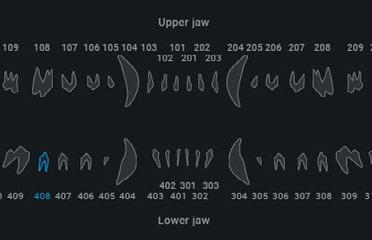
Adjustable resolutions allows for fast scanning times. Upto4xsize2imageplatescanbereadinaslittleas25seconds




Highest Resolution 40 LP/mm theoretical, with 25 LP/mm actual
Developed for requirements in large vet practices & dental clinics

High resolution glass touch display, patented PCS technology for excellent image quality
Compact design- 39.1cm x 28.5cm x 25cm, weighing only 8kg
Introducting size 6 plate, with great potential for long snouted dogs, extremites, and small exotics
Vet Exam PRO X-RAY SOFTWARE
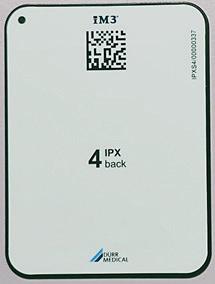
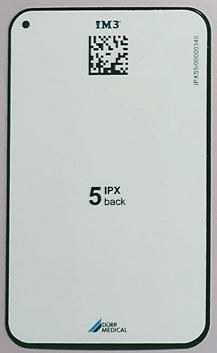
Capture & view
The integrated capture and viewer allows for immediate comparison between newly acquired x-rays and older images.
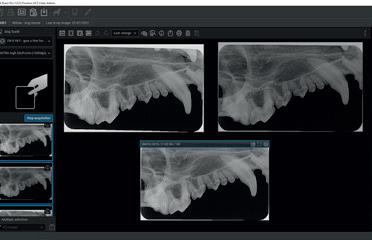

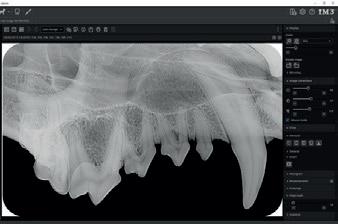
Range of species
Dental charts for cats, dogs, guinea pigs, rabbits, rats, mice, ferrets, birds, equine and more.
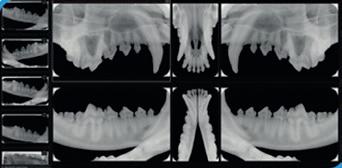
Veterinary Layouts
Use pre-loaded veterinary specific layouts, or create and save your own for future use.
The CR 8 comes preloaded with iM3 Vet-Exam Pro software, providing superior image resolution quality, and full DICOM compliance, ensuring easy export of data.
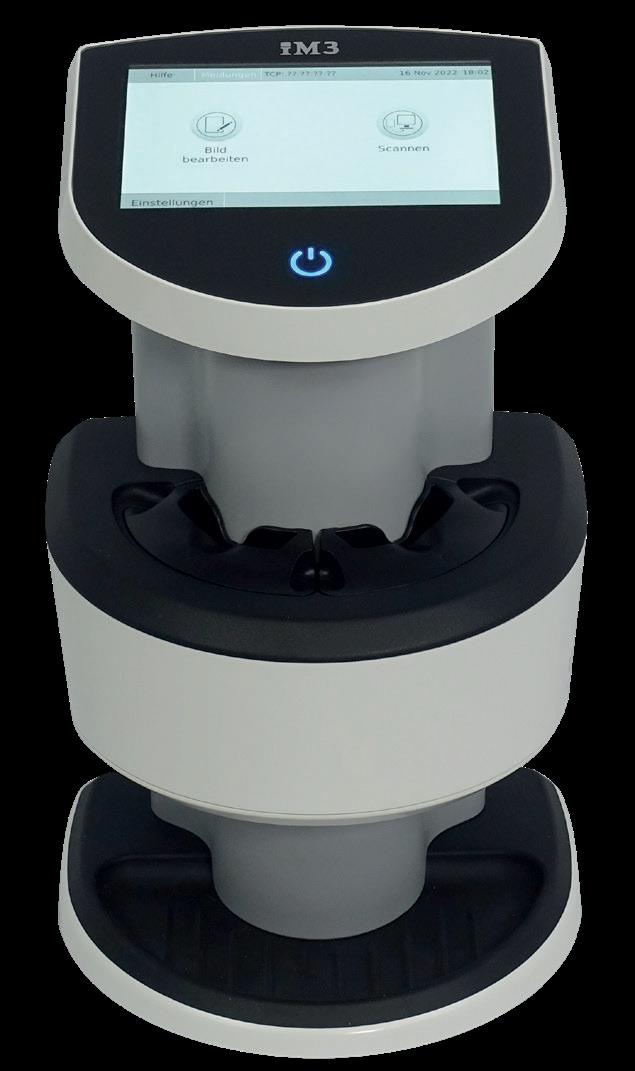
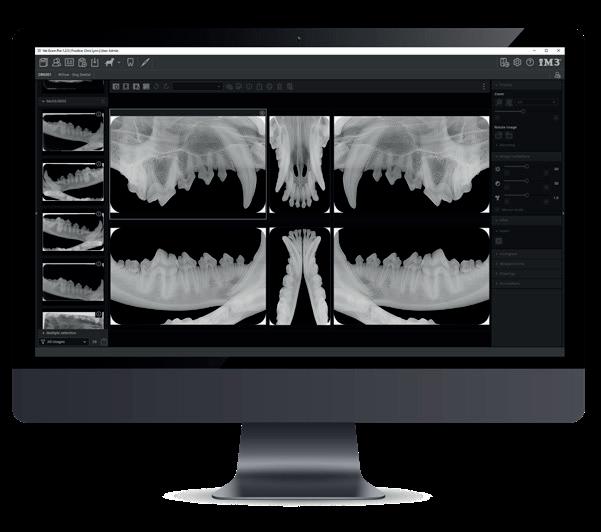
iM3 Vet-Exam Pro incorporates many new innovations, and has been designed to be as user friendly and intuitive as possible. As new x-rays are captured they are automatically saved in the background with no interruption to the user.
TheSurfaceQualityCheck feature scans the image plates for damage and scratches, and recommends when the image plate should be replaced.
Refined Toolbox
The newly refined and improved toolbox was designed to be intuitive and simple to learn.
Full DICOM compliance allows easy export of data to remote applications.
Improved connectivity to the iM3 CR 8 Vet or DR7 for seamless workflow.
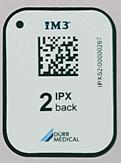
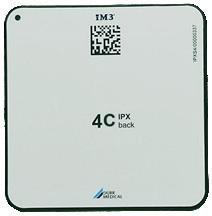

BI promotes local Head of Animal Health to US VP role
Boehringer Ingelheim has announced the appointment of Christoph Tautphaeus as Head of Animal Health Australia and New Zealand, succeeding Daniel Watkins who has been promoted to Vice President, Pets inthe United States. Christoph Tautphaeus is currently the Head ofFinance and Administration for Boehringer Ingelheim Australia and New Zealand and will commence his new role in July.
Watkins has led Animal Health in Australia and New Zealand since January 2022 and been with Boehringer Ingelheim since 2012. Daniel also served as a Director of Animal Medicines Australia, the peak industry body representing
the leaders of the animal health industry in Australia.
“Daniel has been an integral part of our team as Head of Animal Health. He has captained with integrity and vision and his promotion to the world’s largest pets market is testament to his successful leadership here.
Ithank Daniel for his invaluable contributions, and I wish him all the best in his new US role,”
Dirk Otto, General Manager, BoehringerIngelheim Australia, and New Zealand, said.
Tautphaeus has been with Boehringer Ingelheim since 2008, where he has led teams across Germany, Denmark, and Asia Pacific, prior to taking his current
position in 2018. He holds postgraduate and Honours degrees in Business Administration and International Business from United Kingdom and German universities.
“I’m excited to step into such an energised Animal Health team,” Tautphaeus said. “This business leadership opportunity reaffirms my great respect for Boehringer Ingelheim as an organisation dedicated to its people, and I look forward to working with my new team and our valued customers and industry partners to transform lives and deliver better health toanimals across Australia and New Zealand.”
Australia: first country to approve Bravecto Quantum
MSD Animal Health has announced the Australian Pesticides and Veterinary Medicines Authority (APVMA) has approved a novel injectable form of Bravecto (fluralaner) for the control of Ixodes holocyclus (paralysis tick) for 12 months, the treatment and prevention of Ctenocephalides felis (flea) infestations for 12 months, the control of Rhipicephalus sanguineus (brown dog tick) for 11 months, and the control of flea allergy dermatitis (FAD).
Australia is the first country worldwide to gain approval of Bravecto Quantum. This is important because, unique to Australia’seastern seaboard, the paralysis tick – Ixodes holocyclus –is the single most dangerous parasite for dogs with just one tick capable of causing paralysis and even death.1 Due to the devastating effects of paralysis tick on dogs, treatment following infestation is not always successful.2
The product is indicated for use by, or under the supervision of, a veterinarian and for administration to dogs from six months of age. There is no contraindication to administering the injection with other commonly used medications and vaccinations.
“MSD Animal Health has always been committed to ensuring veterinarians are at the forefront of pet owner education and advice when it comes to our products,”
Eric Flanagan, General Manager,Australia and New Zealand, MSD Animal Health, said. “[This] is no exception; we are excited that Australia is the first country in the world to launch this gamechanging treatment that can only be administered by or under supervision of veterinarians. We firmly believe veterinarians are best placed to explain the efficacy and compliance benefits of Bravecto Quantum to dog owners.”
The active ingredient in the product is fluralaner, an isoxazoline that has been used by veterinarians to protect dogs from fleas and ticks since 2014. The unique crystallized fluralaner in suspension allows for sustained effective levels of active ingredient to be maintained as the fluralaner is gradually absorbed from the site of the injection, providing ongoing efficacy against fleas and paralysis ticks for 12 months and efficacy against brown dog ticks for 11 months.
“Though we typically think of paralysis tick season occurring during the summer months, we know these deadly parasites can be a threat year-round,”
Jason Drake, Director, Scientific Marketing Affairs, Global Companion Animal Parasiticides, at MSD Animal Health said. “Similarly,fleas can strike at any time during the year. Missed doses of monthly treatments leave gaps in protection; with a onceyearly dosing, Bravecto Quantum
provides a long duration of protection, simplifying paralysis tick and flea protection for both pet owners and veterinarians, which promotes compliance and ensures continuous year-long protection.”
The product takes three days to exert its full effect against paralysis ticks, so it should be applied at least three days before the dog is exposed to paralysis ticks. Paralysis ticks already on dogs prior to applying the product will not be killed immediately after injection. These paralysis ticks should be removed. After three days, Bravecto Quantum demonstrated >95 per cent efficacy against new paralysis tick infestations for 12 months.
Brown dog ticks, the most widespread tick in tropical and sub-tropical areas of Australia, are known to feed on dogs and can transmit tick borne disease such as ehlichiosis.3 Therefore, yearround protection against fleas and ticks is of utmost importance. Asingle injection of the product will control flea infestations on the dog within 2 days of treatment. From day 6, newly emerged adult fleas are killed before they lay eggs, for a full year. Longlasting efficacy controls newly emerged fleas before viable eggs are produced; effectively controlling flea populations in the dog’s environment.
Bravecto Quantum is well
tolerated with the only treatment-related finding limited to transient, non-painful injection site swellings that resolved over time, with no further treatment required. Fluralaner is part of the isoxazoline family of chemicals. Adverse reactions to this family of chemicals are rarely observed but may include vomiting, diarrhoea, lethargy, inappetence,itching and very rarely, seizures. Most adverse reactions are self-limiting and of short duration.
MSD Animal Health is present in more than 50 countries, while its products are available in some 150 markets. For more information, visitwww.msdanimal-health.com.
References
1. Webster, M., Fisara, P. and Sargent, R. (2011) Long-Term Efficacy of a DeltamethrinImpregnated Collar for The Control of The Australian Paralysis Tick, Ixodes Holocyclus, On Dogs. Australian Veterinary Journal,89; 439-443.
2. Atwell, Campbell and Evans. (2001) Prospective survey of tick paralysis in dogs. Australian VeterinaryJournal,79; 412-418.
3. Hii, SF et al. Canine tick-borne pathogens and associated risk factors in dogs presenting with and without clinical signs consistent with tick-borne disease in northern Australia. Aust Vet J. 2015;93(3):58-66
VetCT expands global reach in equine teleradiology with Murdoch University
VetCT announced its continued expansion in the equine market providing comprehensive teleradiology services to the growing imaging department at Murdoch University in Perth.
Installation of a new Hallmarq MRI machine at the University, and a Qalibra CT coming later this year, have been sponsored by Racing and Wagering Western Australia (RWWA) to increase the availability of advanced imaging to more horses and
ultimately improve horse welfare.
The company will provide interpretation of MRI scans alongside the existing partnership with Murdoch University reading X-rays in both equine and small animal departments. It will also interpret CT images after that machine is installed. VetCT equine radiologists will act as an extension of the University’s imaging department.
As well as image reporting services, the company provides
ongoing clinical and technical support, including online training sessions, case discussions and advice on image acquisition and case selection. VetCT's radiologists will present virtual lectures on advanced imaging to Murdoch University students, with a particular focus on how to optimise its use in case management.
“We are excited to be developing our advanced imaging capacity with support from RWWA,” David
Byrne, Senior Lecturer and Registered Specialist in Equine Medicine, Murdoch University, said. “With VetCT,we can work with internationally recognised equine imaging specialists and benefit from their quality reports, quick turnaround and detailed feedback. However, what has been most useful is their approachability and willingness to help us problem solve and optimise image acquisition in our advanced imaging services.” Topage 30
Partnership aids racehorse retirement
From page 1 racehorses with an even better chance to flourish in their new careers,” MacPhail said.
Of the 300 horses that retire from racing in South Australia each year, asignificant number are re-homed in the Roseworthy area, with many finding new careers in the equestrian and breeding sectors.
Up to 60 of these horses are expected to access the subsidised healthcare each year and this
has been added to the Retired Thoroughbred Racehorse Assistance Package that Racing SA’s welfare arm – Thorough Care SA – offers to all SA thoroughbred racehorses transitioning into retirement.
“The welfare of our horses is our top priority and to now have access to world-renowned veterinary care at the University of Adelaide’s Roseworthy Veterinary Hospital isagreat initiative,” said Racing
Coral stress increases as water warms
From page 1
The study’s most conservative modelling predicts disease prevalence could increase to 76.8 per cent by 2100 if global temperatures continue to rise on the same trajectory as the period studied.
Samantha Burke, lead author of the study, said the findings highlight the devastating impacts of rising temperatures on coral reefs.
“Certain diseases act more quickly
than others, but most corals that get diseased end up dying from it,” Burke said. “Because reefs take a long time to establish, the coral may not recover, and entire sections ofthe reef can be lost.”
Coral reefs play a critical role in the marine ecosystem, supporting around a quarter of the world’s fish. They are also vital for coastal communities reliant on reefs for fisheries and tourism, as well as the
Collaboration agreed for title protection
From page 1
Western Australia is the only state or territory that currently has a formalised process for title recognition, registration, and maintenance of credentials for vet nurses.
In 2019 the VNCA launched the voluntar y Australian Veterinary Nurse and Technician (AVNAT) Registration Scheme, however Australasia remains behind global standards in title protection and regulation.
AVA CEO David Andrews said the collaboration is an important step towards recognition for the whole of the veterinaryteam.
“We are excited to see this important work of development of a pathway towards national registration of veterinary nurses and veterinarytechnicians take its next step,” he said.
■ SAM WORRADSophie’sLegacy takes aim at vet staffabuse
From page 3
Putland said he is also hopeful of ameeting with a federal minister to canvas the idea of preventing bill shock by combining basic pet insurance with animal registration.
Between Februaryand May last year, Sophie’s Legacy surveyed 600 veterinarians about their mental health, with about two thirds of the respondents aged 35 and under.
“We wanted to go out to a younger group,” Putland said.
“After Sophie passed away, I was speaking to a psychologist, who actually taught Sophie, about the generational gap in the perception of older vets and younger ones.
“Sometimes in older veterinarians there can be an ‘I did it, so why can’t you?’ attitude.”
He added that 92 per cent of the respondents were female, an indication of a highly feminised profession.
“That’ssomething we need to understand; young female vets are among the most vulnerable to abuse.”
The survey found that two thirds of respondents had struggled with their mental health, and that client abuse and expectation is the number one contributor to this, with poor working conditions, low pay and conflict with colleagues also being key factors.
SA’s Industry Operations Manager John Cornell.
“On top of everything else we’re doing with nutrition and cryotherapy, our partnership with the University of Adelaide’s Roseworthy Veterinary Hospital is a win-win for everybody.” The program will commence mid-2023. To access the program, contact the Roseworthy Veterinary Hospital on (08) 8313 1999.
protections they provide from storms and coastal erosion.
“They are the habitat builders. Without coral, there is no reef environment and no coastal industry,” she said.
Burke said more research into coral disease will also help scientists develop effective disease interventions and demonstrate the complexity of threats that coral reef ecosystems may be facing.
■ JULIAGARDINERBusiness - VetCT expands
From page 29
“We are delighted to grow our working relationship with Murdoch University to help them take full advantage of their new MRI machine, and the CT machine to come,” Charlotte Graham of VetCT said. “Our team … are dedicated to providing the best possible service to our clients and their patients. Weendeavour to improve the working life for veterinary teams and support them in delivering optimal patient welfare and outcomes.”
The company’s equine teleradiology services include interpretation of radiographs, CT and MRI scans, as well as consulting on difficult cases and providing support for veterinarians in remote areas.
Abstracts - dairy cows
TheVeterinarian
Sydney Magazine Publishers Pty Ltd
ACN 102752787 ISSN 1447-9768
PO Box 305 Millthorpe NSW 2798
Tel: 02 9487 6627
Director - Clem Martin
Email: clem.martin@vetmag.com.au
Editorial Advisory Board

Thomas Donnelly BVSc DipVP
DipACLAM
Nicholas Kannegieter BVSc
DipVetClinStud PhD FACVSc
David Lidbetter BVSc MVS FACVSc
DipECVS Dip ACVS
Angus Martin BVSc
Mary Porter BVSc (Hons) MACVSc
Jeffrey Smith BVSc FACVSc Dip ACVO
David Vella BSc BVSc (Hons) DABVP
Editor - Luke Martin
Tel: 0418 698 228
Email: luke.martin@vetmag.com.au
National Sales Manager

James Martin
Tel: 0432 575 877
Email: james.martin@vetmag.com.au
Designer - Anne Norrell
Email: annenorrelldesign@gmail.com
Printed by Newstyle Printing
41 Manchester St, Mile End SA 5031
Post Print Approved PP255003/06488
All material in The Veterinarian is subject to copyright and must not be reproduced wholly or in part without the written permission of the Editor. Views expressed in The Veterinarian are not necessarily those of The Veterinarian orSydney Magazine Publishers Pty Ltd.
Subscriptions - Clem Martin
Tel: 02 9487 6627
Email: clem.martin@vetmag.com.au
SUBSCRIBE
NOW!
Putland said the emotional heft of putting the campaign together has been made easier by the support of family and friends.
“We started this as a family of six; myself, my wife, Sophie’sbrothers and their partners,” he said.
“Since then, we have another nine people on board, many working for free because they’ve got an investment in what is a really good idea.”
Sophie’s Legacy has advised vets who are yet to receive a We’re Only Human poster to register for one at sophieslegacy.com
“I would call on vets to place the poster somewhere prominent in their surgery, and to encourage their clients to take the pledge,” Putland said.
Sophie Putland took her own life in September of 2021.
Her father described her has a “brilliant and gifted vet, a compassionateand caring person to her family, friends and animals.”
■ SAMWORRAD
From page 14 capture of information on lameness in dairy cows and identifies potential knowledge gaps.
Peter T Thomsen1,Jan K Shearer2, Hans Houe3 Vet J.2023 May;295: 105975.doi: 10.1016/j.tvjl.2023.105975.
1Department of Animal and Veterinary Sciences, Aarhus University, Tjele, Denmark. Electronic address: ptt@anivet.au.dk.
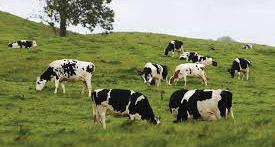
2College of Veterinary Medicine, Iowa State University, Ames, IA, USA.
3Department of Veterinary and Animal Sciences, University of Copenhagen, Frederiksberg, Denmark.
Free article
Mail POBox 305 Millthorpe NSW 2798

Phone (02) 9487 6627

www.theveterinarian.com.au
Subscriptions
Australia
$93.50 for 1 Year
$138.60 for 2 Years
$182.60 for 3 Years
New Zealand
$105 (AUD) 1 Year
$160 (AUD) 2 Years
$210 (AUD) 3 Years
USA/Canada (airmail) $135
UK/Europe
CREATURE Feature
Dumbo octopuses (Grimpoteuthis umbellata) Agenus of pelagic finned or cirrate octopuses, dumbo octopuses’ name originates from their resemblance to the title character of the 1941 film Dumbo.Living from three to five years, these animals feed on crustaceans, bivalves, worms and copepods, and reside at depths of up to 4800 metres.